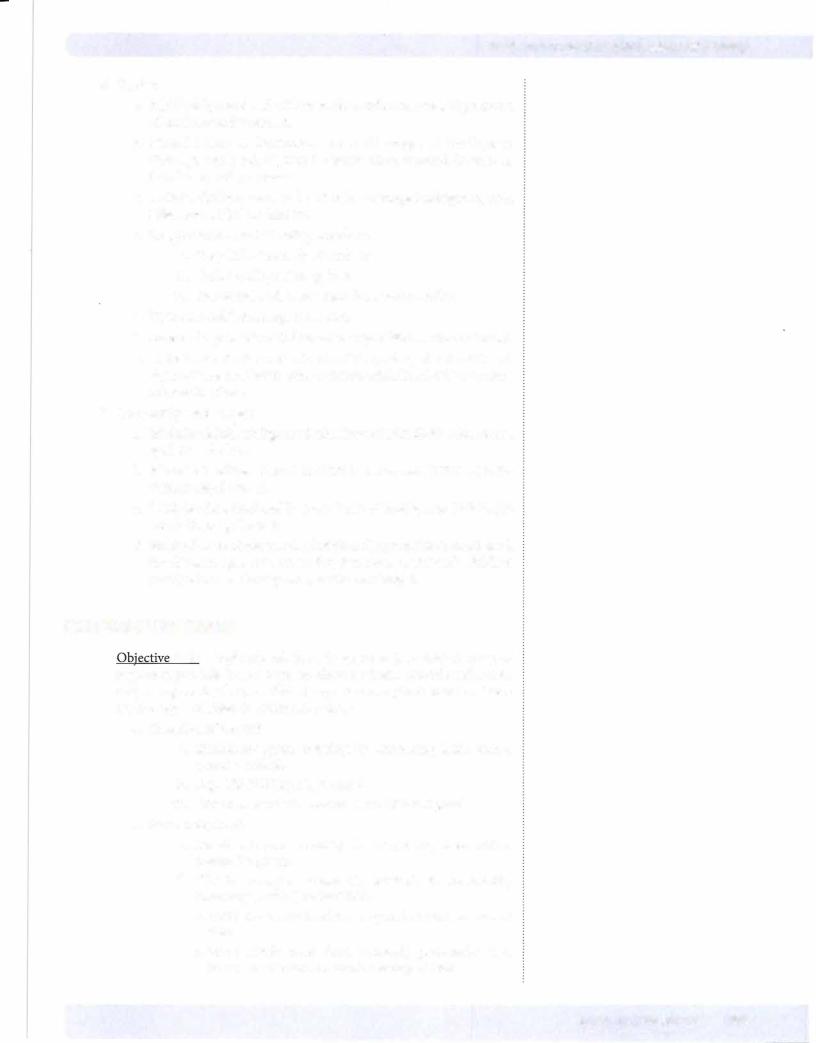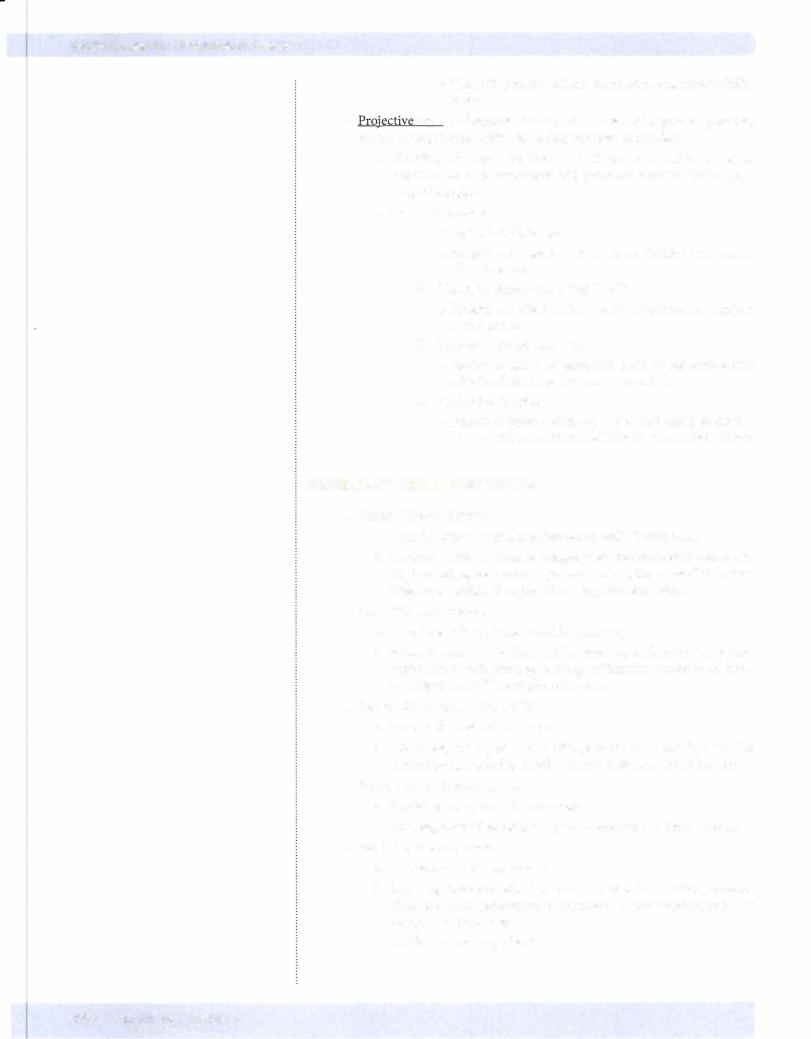
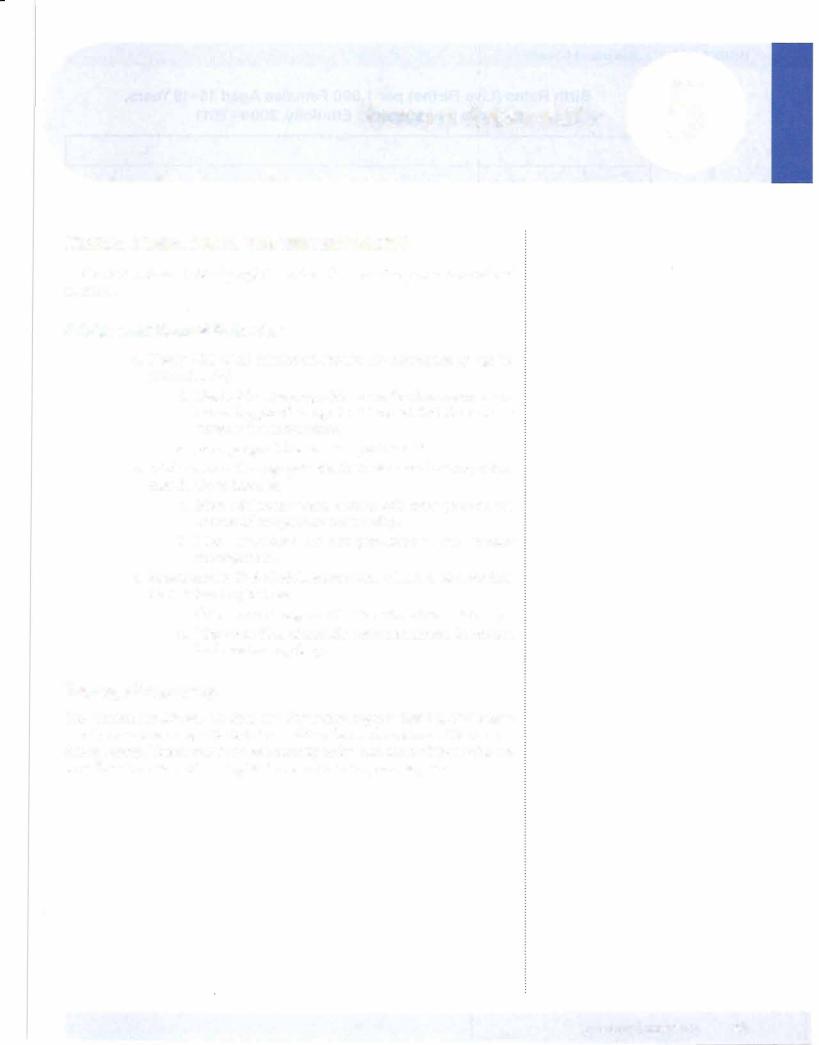
Human Sexuality |
5 |
SEXUAL BEHAVIOR IN THE UNITED STATES
In the United States, 95% of people have their first sexual experience outside of marriage.
Adolescent Sexual Behavior
a.Nearly 70% of all unmarried females are nonvirgins by age 19 (80% ofmales).
i.Nearly 4 in 10 teenage girls whose first intercourse expe rience happened at age 13-14 report that the sex was unwanted or involuntary.
ii.Average age of first sexual experience: 16
b. Adolescents in the aggregate still drift into sexual activity rather than decide to have sex.
i.Most adolescent sexual activity still takes place in the context of one primary relationship.
11.Most adolescents are not promiscuous, but "serially monogamous."
c.Recent survey: 57% of adolescents claim to have used a condom the last time they had sex.
i.Other research suggests that they do not do as they say.
11.More than 50% of sexually active adolescents do not use birth control regularly.
Teenage Pregnancy
The Centers for Disease Control and Prevention reports that 329,797 babies were born to women age 15-19 in 201 1 . This reflects a decrease for U.S. teens in this age group. Teens seem to be less sexually active, and more of those who are sexually active seem to be using birth control than in previous years.
MEDICAL 61
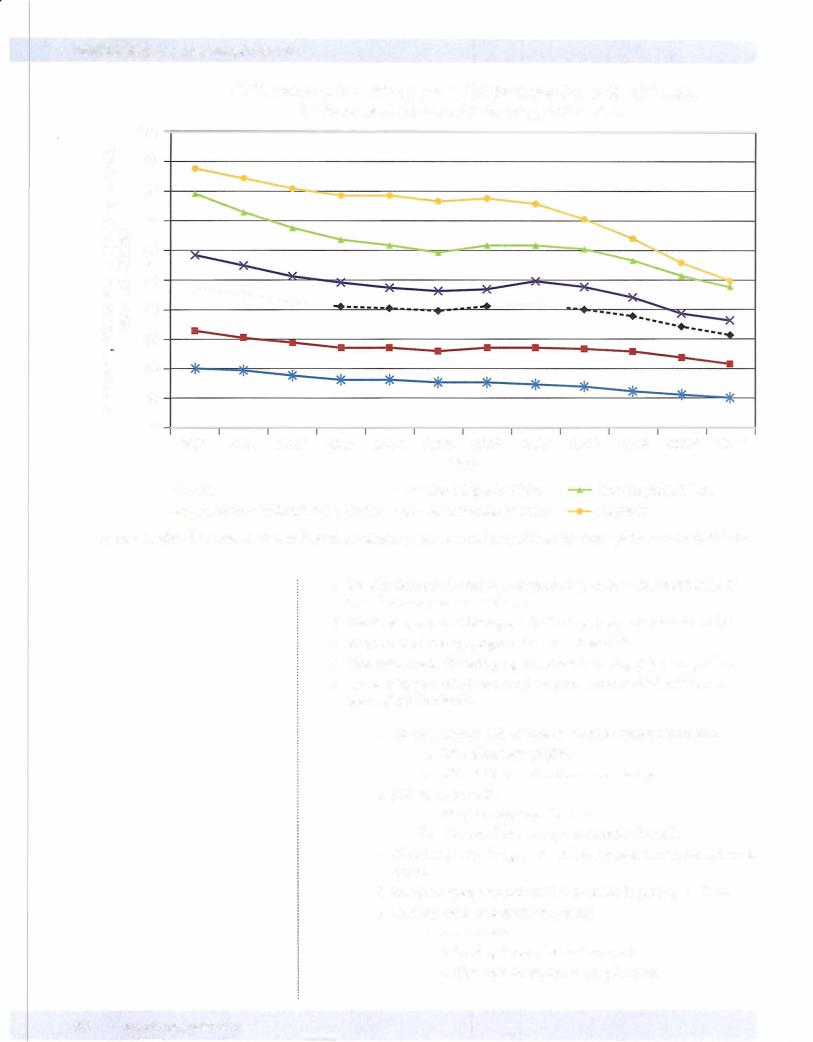
USMLE Step 1 • Behavioral Science
Birth Rates (Live Births) per 1 ,000 Females Aged 15-19 Years, by Race and Hispanic Ethnicity, 20002011
..c. |
|
100 |
|
|
|
|
|
|
|
|
|
|
|
|
|
||
|
|
|
|
|
|
|
|
|
() |
|
90 |
|
|
|
|
|
|
Ctl |
|
|
|
|
|
|
|
|
Q) |
|
|
|
|
|
|
|
|
.2 |
|
80 |
|
|
|
|
|
|
c.. |
|
|
|
|
|
|
|
|
::J |
|
|
|
|
|
|
|
|
0 |
|
70 |
|
|
|
|
|
|
O> >- |
|
|
|
|
|
|
||
Q) |
:!:: |
|
|
|
|
|
|
|
0 > . |
60 |
|
|
|
|
|
|
|
Ctl |
c: |
|
|
|
|
|
|
|
.!: |
£ |
|
|
|
|
|
|
|
|
Q) |
50 |
|
|
|
|
|
|
en -c |
· - - - - - -...- -- - - |
|
----- |
|
|
|||
|
c: |
|
+ |
|
|
|||
Ctl |
Ctl |
40 |
|
|
|
------·-- - - |
|
|
E |
°' |
|
|
|
|
|
||
Q) |
() |
|
|
|
|
|
|
|
- |
Ctl |
|
|
|
|
|
|
|
0 |
|
30 |
|
|
|
|
|
|
0 |
|
|
|
|
|
|
|
|
0 |
|
|
|
|
|
|
|
|
,.... |
|
|
|
|
|
|
|
|
|
|
20 |
|
|
|
|
|
|
Q) |
|
|
|
|
|
|
|
|
c.. |
|
|
|
|
|
|
|
|
Q) |
|
|
|
|
|
|
|
|
- |
|
10 |
|
|
|
|
|
|
Ctl |
|
|
|
|
|
|
|
|
a: |
|
|
|
|
|
|
|
|
|
|
0 |
|
|
|
|
|
|
|
|
2000 2001 2002 2003 |
2004 2005 2006 2007 |
2008 2009 201 O* 2011 * |
||||
|
|
|
||||||
|
|
|
|
|
|
|
Year |
|
|
|
|
|
- + - All |
|
|
- Non-Hispanic White |
Non-Hispanic Black |
|
|
|
|
-*- American Indian/Alaska Native -+- Asian/Pacific Islander |
Hispanic |
|||
Source: Hamilton BE, Martin JA, Ventura SJ. Births: Preliminary data for 2010. National Vital Statistics Reports. 2011;60(2):Table S-2.
•Despite declines in rates of teen pregnancy in the U.S., about 820,000 teens become pregnant each year.
•Nearly 80 percent of teenagers who become pregnant are unmarried.
•80 percent of teenage pregnancies are unintended.
•The main rise in the teen pregnancy rate is among girls younger than 15
•Close to 25 percent of teen mothers have a second child within two years of the first birth.
a.About 1 million U.S. teenagers become pregnant each year.
i.10% of all teenage girls
ii.50% of allunwed mothers are teenagers.
b.50% have the child.
i.33% have elective abortions.
ii. The remainder are spontaneously aborted.
c.About 33% of girls aged 15-19 have at least one unwanted preg nancy.
d.Single mothers account for 70% of births to girls aged 1 5-19.
e.Consequences ofteenage pregnancy
I. For mother:
• Leading cause of school dropout
• High risk for obstetric complications
62 MEDICAL
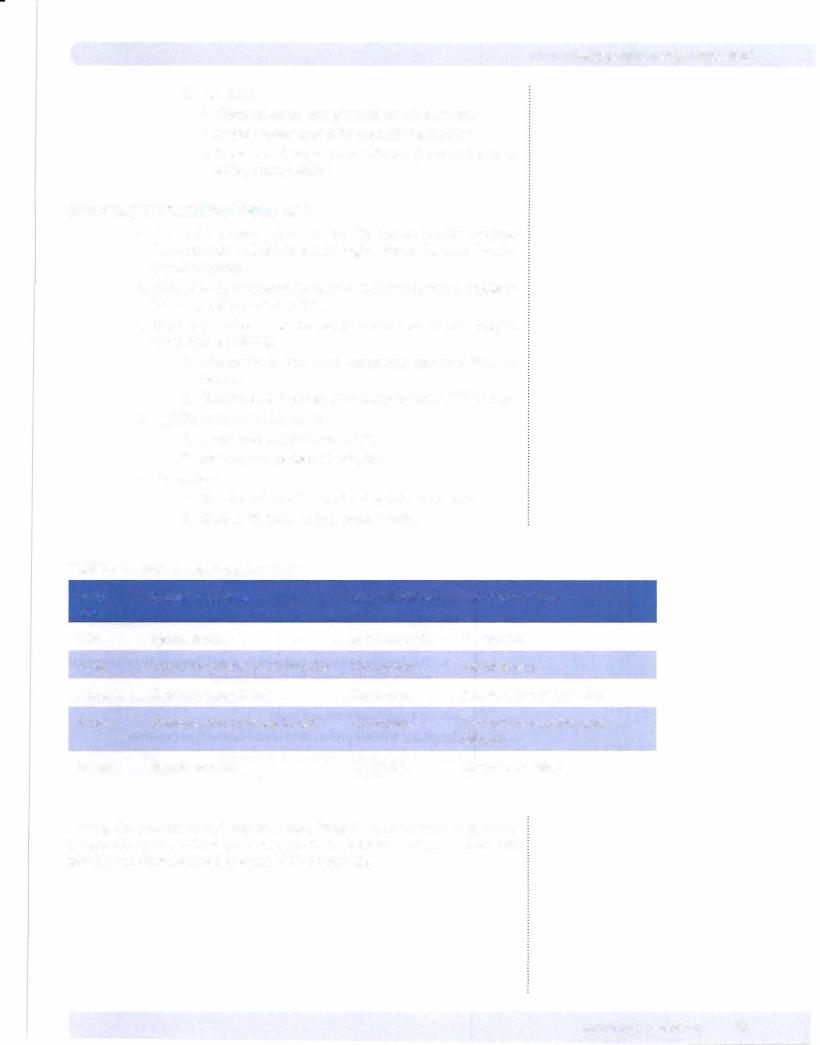
Chapter 5 • Human Sexuality
u.For child:
•Neonatal deaths and prematurity are common.
•Possible lower level of intellectual functioning
•Problems of single-parent family (increased risk of delinquency, suicide)
SexuallyTransmitted Diseases
a.One in 5 teenagers willhave a sexually transmitted disease: rates for gonorrhea and chlamydia are higher for adolescents than for any older group.
b.Highest incidence: most common sexually transmitted disease is human papilloma virus (HPV).
c.Highest prevalence: one in five Americans has herpes simplex virus, type 2 (HSV-2).
L Chlamydia is the most commonly reported STD in women.
n.Gonorrhea is the most commonly reported STD in men. d. Syphilis (primary and secondary):
i.Cases have doubled since 1970.
ii.Rate now more than 20/100,000 e. Gonorrhea:
L Number of cases has declined by half since 1975. ii. Since 1975, increase in resistant strains
Table 5-1. Male Sexual Response Cycle |
|
|
|
Body |
Excitement Phase |
Orgasm Phase |
Resolution Phase |
Area |
|
|
|
Skin |
Sexual flush |
3-1 5 seconds |
Disappears |
Penis |
Vasocongestion, penile erection |
Ejaculation |
Detumescence |
Scrotum |
Tightening and lifting |
No change |
Decrease to baseline size |
Testes |
Elevation and increase in size |
No change |
Decrease to baseline size, |
|
|
|
descent |
Breasts |
Nipple erection |
No change |
Return to baseline |
During the excitement and orgasm phase, there is an increase in respiration, tachycardia up to 180 beats per minute, a rise in systolic blood pressure 20-100 mm Hg and diastolic blood pressure of 10-50 mm Hg.
MEDICAL 63
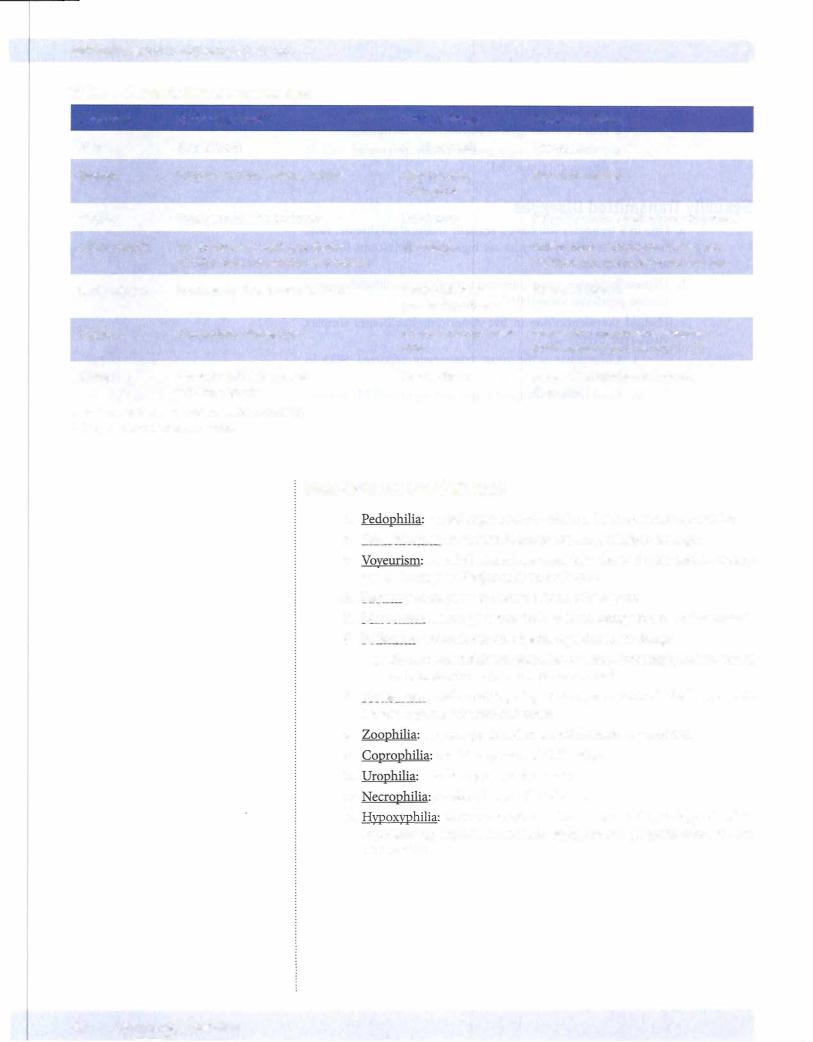
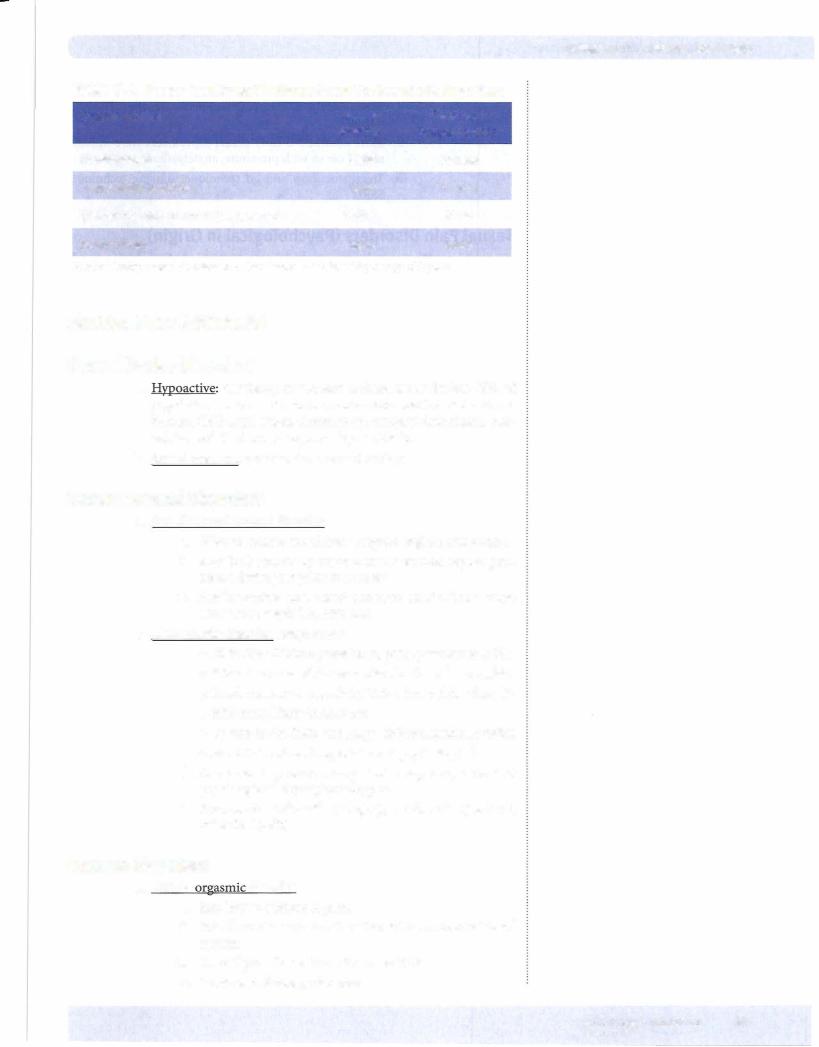
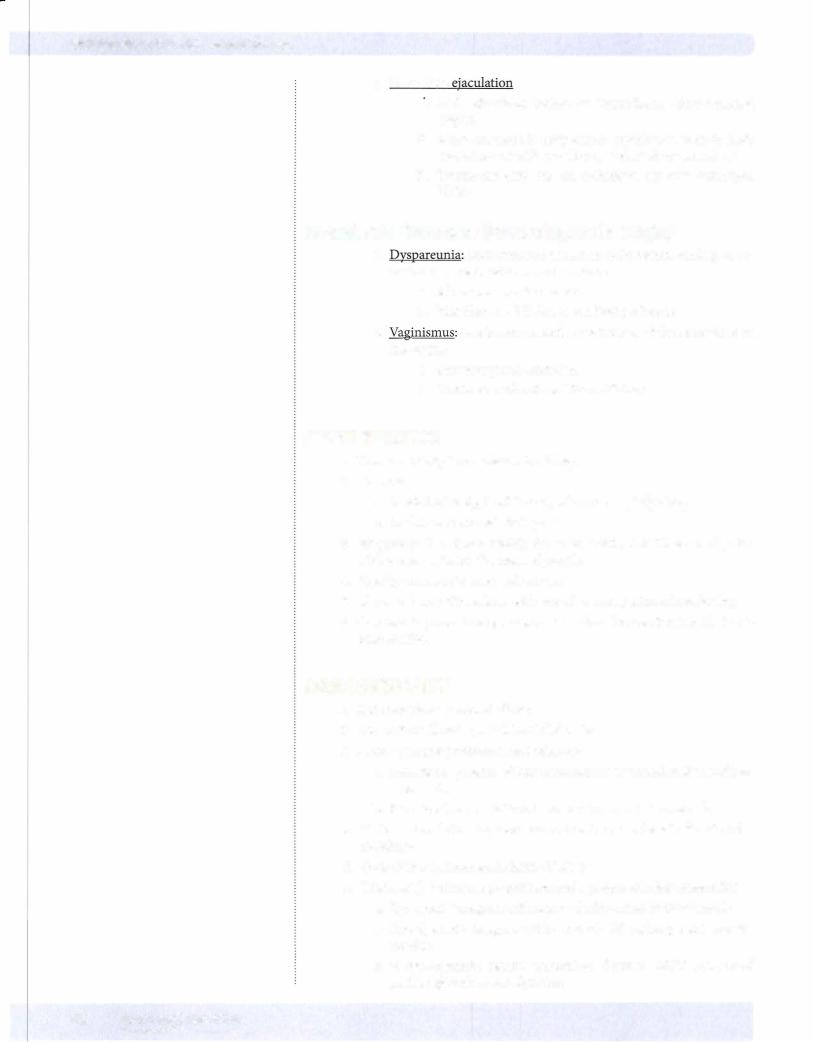
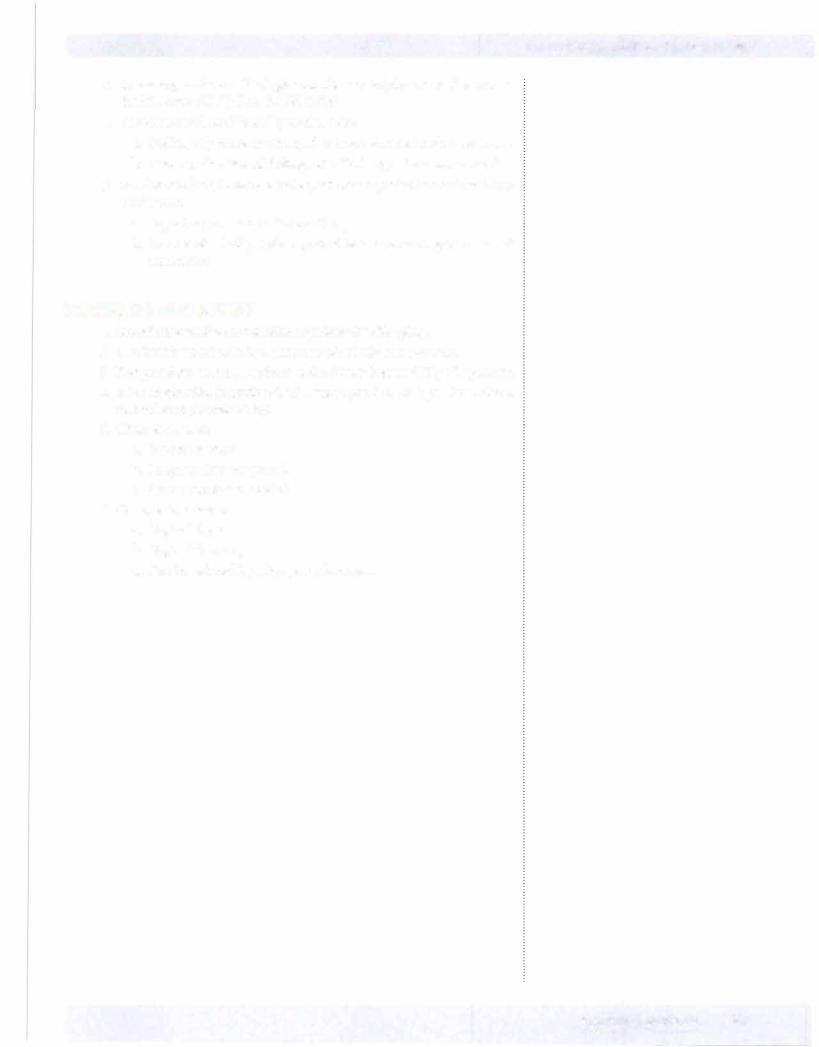
Chapter 5 • Human Sexuality
7.Increasing evidence ofbiologic contribution. Higher concordance rates for MZ twins (52%) than for DZ (22%)
8.Preference well established by adolescence
a.Feelings ofpreference emerge 3 or moreyears before first encounter
b.Describe duration of feelings with ''As long as I can remember"
9.Similar number ofheterosexual experiences reported in childhood and adolescence
a.Report experiences as "ungratifying"
b.30 to 40% of all people report at least one same-gender sexual experience
SEXUALITY AND AGING
1.Sexual interest does not decline significantly with aging.
2.Continued sexual activity means sexual activity can continue.
3.Best predictor ofsexual activity in the elderly is availability ofa partner.
4.After myocardial infarction (MI), sexual position that puts least strain on the heart: partner on top
5.Changes in men:
a.Slower erection
b.Longer refractory period
c.More stimulation needed
6.Changes in women:
a.Vaginal dryness
b.Vaginal thinning
c.Can be reduced by estrogen replacement
MEDICAL 67
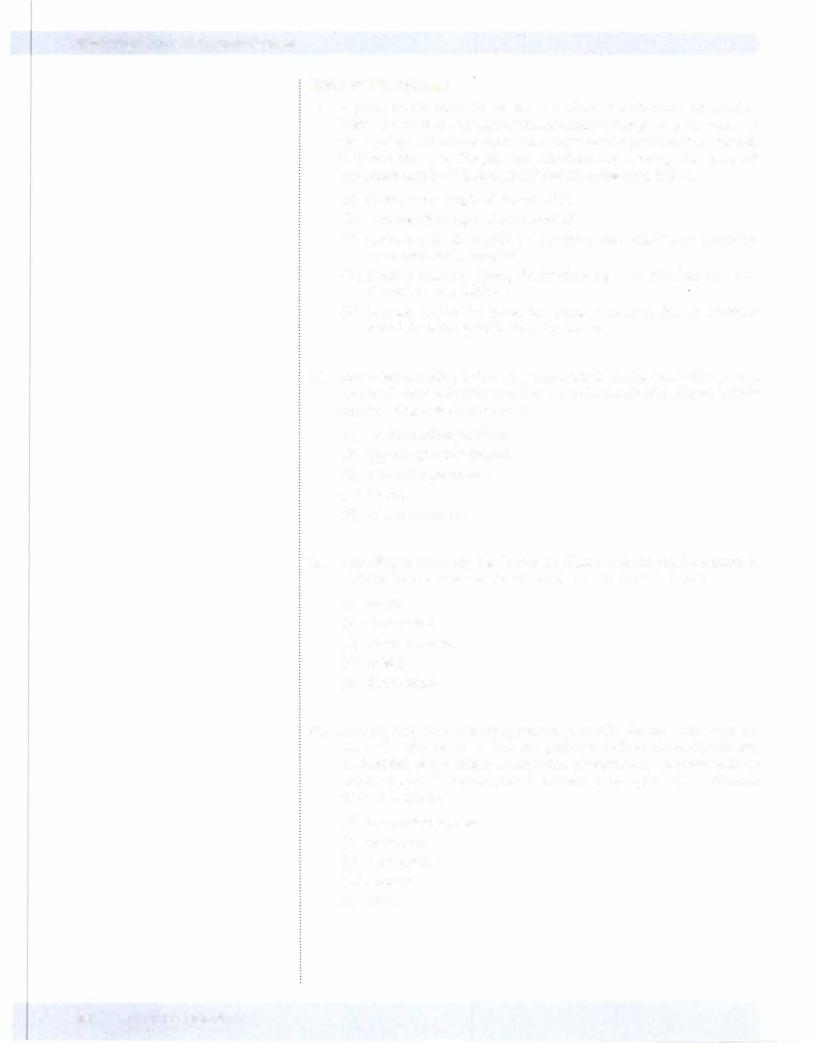
USMLE Step 1 • Behavioral Science
Review Questions
40.A young couple comes to you for counseling soon after they are married. They say they have read that marital satisfaction changes over the course of the marriage and want to know what they should expect over the course of their own marriage. The physician tells them that, although their personal experience may be different, overall marital satisfaction tends to
(A)increase with length of time married
(B)decrease with length of time married
(C)increase gradually, reaching a high point when children are in adoles cence, then decline rapidly
(D)decrease gradually during the childbearing years, then increases after all children have left home
(E)increase during the preschool years, decreasing during grammar school, then rise again during adolescence
41. Your schedule indicates that you have an initial appointment with a patient who is a SO-year-old white male. Following the examination, the most likely resultant diagnosis for this man is
(A)gastrointestinal problems
(B)upper respiratory distress (C) essential hypertension
(D)obesity
(E)urinary problems
42.According to surveys by the Centers for Disease Control and Prevention, as of 2000, the most common health problem in the United States is
(A)cancer
(B)heart disease
(C)substance abuse
(D)obesity
(E)dental caries
43.A 32-year-old white woman appears at your office for her annual physical exam. The physical exam shows the patient to be in good health, although she is slightly overweight and has moderately elevated blood pressure. Ifthe patient were to die at some point in the next 10 years, the most likely cause of death would be
(A)unintended injuries
(B)neoplasms
(C)heart disease
(D)homicide
(E)AIDS
68 MEDICAL

Chapter 5 • Human SexuaUty
44.During a I-year period, a physician practicing medicine in the United States would be most likely to encounter a patient suffering from which of the following mandatory reportable diseases?
(A)Hepatitis A
(B)Lyme disease
(C)HIV/AIDS
(D)Chicken pox
(E)Syphilis
45.An earthquake recently devastated a town in Northern California. Electricity was shut offfor several days, and many ofthe people in the area were home less. The most likely pattern ofresponse ofthe affected population wouldbe
(A)widespread emotional aftereffects that are usually mild and transitory
(B)disintegration of social organization
(C)incidence of post-traumatic stress syndrome in close to 20% of those affected
(D)children adapt to the new circumstances more quickly than do adults
(E)increased divorce in the following 6 months
46.You have been appointed to provide an assessment of the general health status of your local community. You have a limited budget and must, therefore, focus on the most likelydeterminant ofcommunityhealth status. Based on this information, your assessment should focus on
(A)hospital bed:population ratio
(B)infant mortality rate
(C)physician:patient ratio
(D)general mortality rate
(E)quality of the physical and social environment
47.Following surgery forthe removal ofher appendix, a female patient comes to see you complaining of a lack ofinterest in sexual contact with her hus band. "We have been fighting so much lately;' she says. "Between that and the pressure I feel at work, I just don't knowwhat to do anymore." Medical history shows that she has been taking diazepam for the past 2 years and oral contraceptives for the past 5 years.Which ofthe following can be safely excluded as unlikely to result in the reported suppression of libido?
(A)Oral contraceptives
(B)Marital discord
(C)Postoperative recovery
(D)Work stress
(E)Diazepam
MEDICAL 69
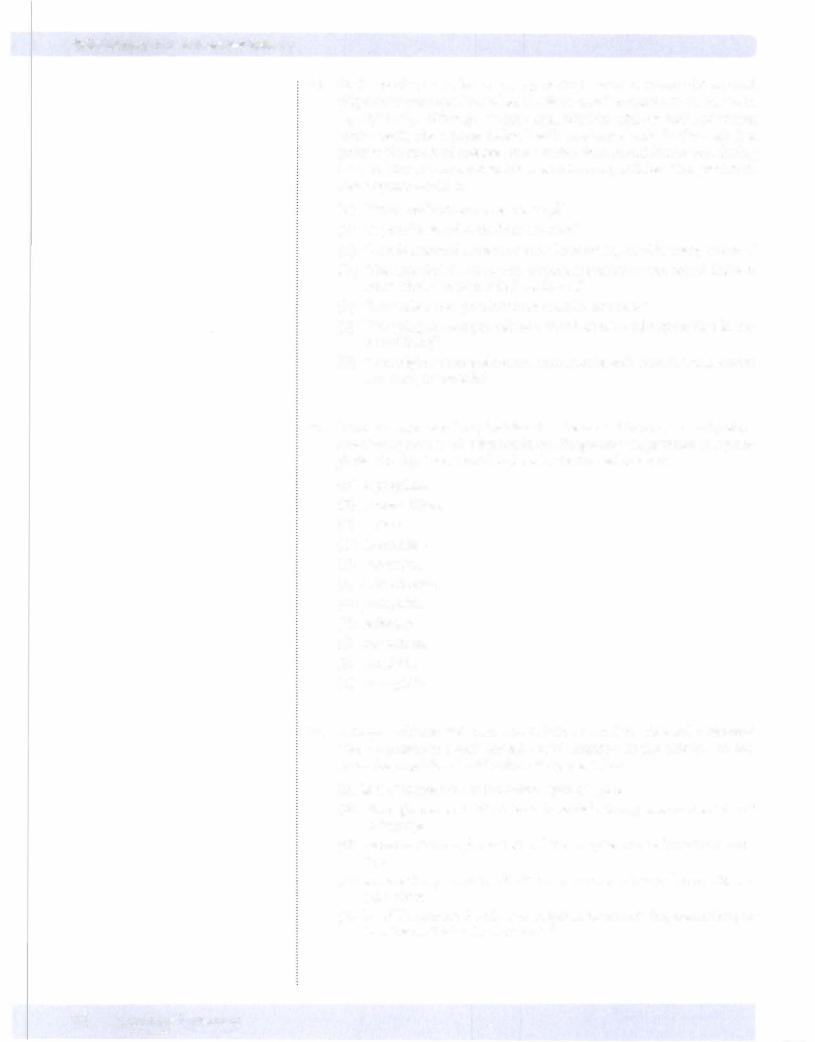
USMLE Step 1 • Behavioral Science
48.At the conclusion of her annual gynecologic exam, a 34-year-old married Hispanic woman confides to her physician that her interest in sex has been "spotty" lately. Although she has sexual relations with her husband at least once a week, she reports feeling "really passionate" only in the week just prior to the onset of menses. She refrains from sexual intercourse during menses. The woman wants to know what is wrong with her. The physician's best response would be
(A)"What medications are you taking?"
(B)"Is your husband sometimes abusive?"
(C) "This is a normal pattern of sexual arousal reported by many women."
(D)"You may find that an erotic movie willstimulate your sexual desire at times when you do not feel passionate."
(E)"How often does your husband want to have sex?"
(F)''I'm going to have you talk to a friend of mine who specializes in this sort of thing:'
(G) "You might consider abstaining from sex for awhile until you feel more sure that you want it."
49.A woman reports to her physician that she can achieve orgasm only when recalling a previous, abusive boyfriend. Suspecting the presence of a para philia, the physician should explore for further evidence of
(A)coprophilia
(B)transvestitism
(C)sadism
(D)frotteurism
(E)voyeurism
(F)exhibitionism
(G)pedophilia
(H)fetishism
(I)masochism
(J)zoophilia
(K)necrophilia
50.A 72-year-old married man who is being treated for elevated cholesterol asks his physician about normal sexual function in the elderly. At this point, the physician should inform the patient that
(A)loss of interest in sex is a natural part of aging
(B)although men maintain interest in sexual activity, women lose interest as they age
(C) more mental and physical stimulation may be required to achieve erec tion
(D)sexual activity should be limited to once a month to reduce cardiovas cular stress
(E)he willbe provided with a prescription for an anti-impotence drug so that it is available when he needs it
70 MEDICAL
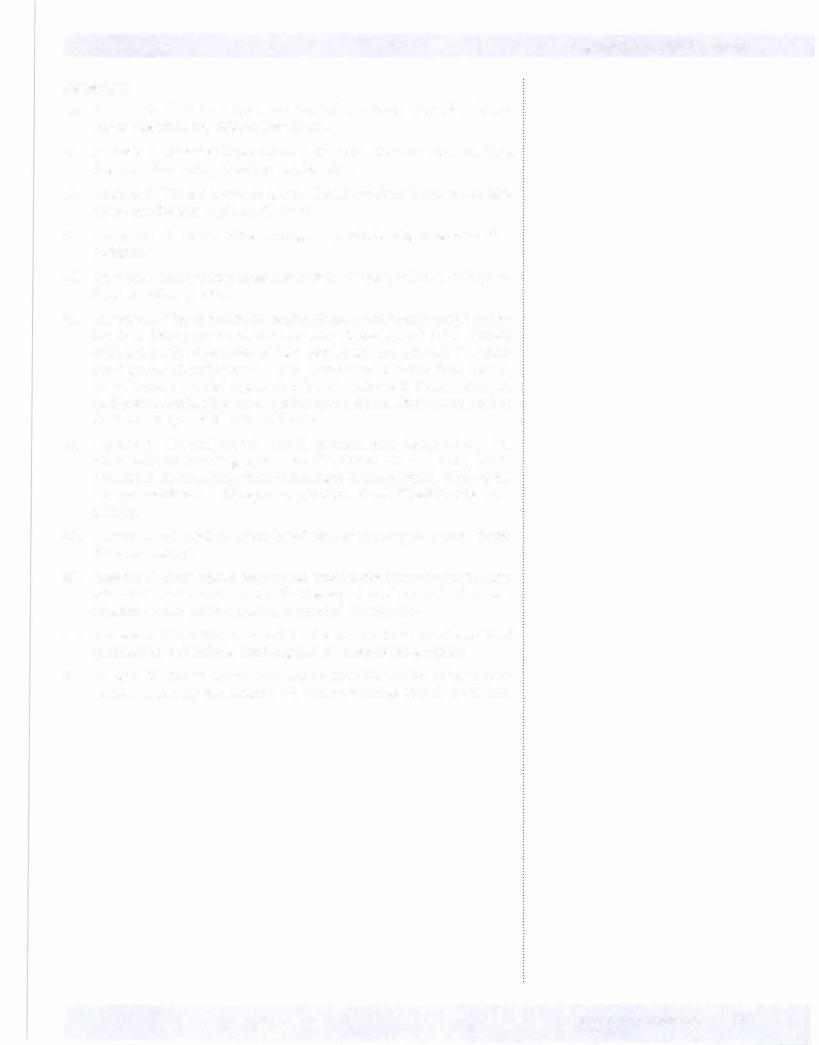
Chapter 5 • Human Sexuality
Answers
40.Answer: D. Marital satisfaction tends to be lower for coupleswith children, and to rise when the children leave home.
41. Answer: C. Essential hypertension is the most likely diagnosis resulting from an office visit by a male to his physicians.
42.Answer: E. The keyhere is the phrase "health problem." More people have dental cavities than anything else listed.
43.Answer: B. For males in the same age range, the leading cause of death is accidents.
44.Answer: D. In order from most to least likely: chicken pox, HIV/AIDS, syphi lis, salmonella, hepatitis A.
45.Answer: A. The aftermath of natural disasters finds many people suffer ing from distress reactions. These reactions, however, tend to be relatively mild and resolve themselves of their own accord and generally fall under the diagnosis of acute stress disorder. After natural disasters, there tends to be an increase in social organization. PTSD incidence is closer to 4% (Mt. St. Helen's). Adults adapt more quickly than children. Divorce rates tend to decline in the period just after a disaster.
46.Answer: E. The quality of the overall environment is the main issue. The other, technical sounding, options are all indicators of community health, but are not the most important determinant. Infant mortality is one of the strongest predictors of life expectancy, but not of overall health of the com munity.
47.Answer: E. Although the others have been shown to suppress sexual desire, diazepam has not.
48.Answer: C. Many women report peak sexual arousal justprior to the onset of menses. Reassure the woman that her experience is normal. She needs reassurance, not problem solving or medical intervention.
49.Answer: I. To qualify for masochism, the sexual act must be the result of gratification that includes receiving pain in either reality or fantasy.
50.Answer: C. Sexual interest does not decline with age for either men or women. A prescription should not be given without an identified problem.
MEDICAL 71

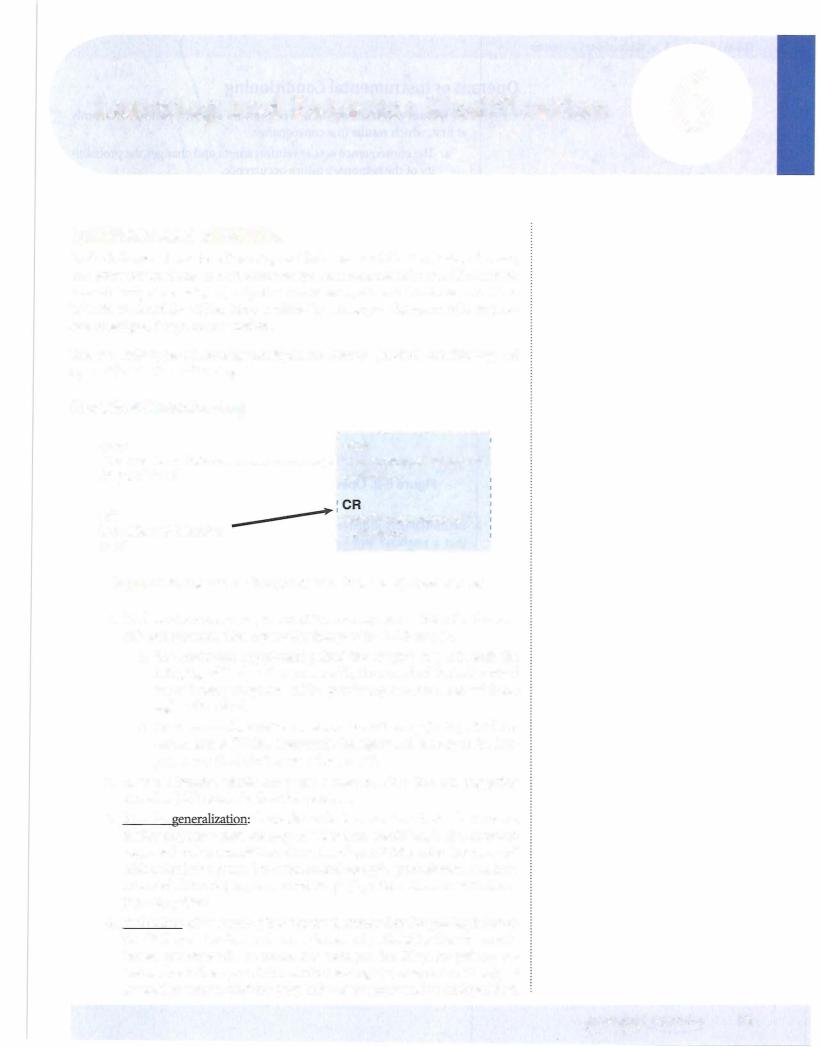
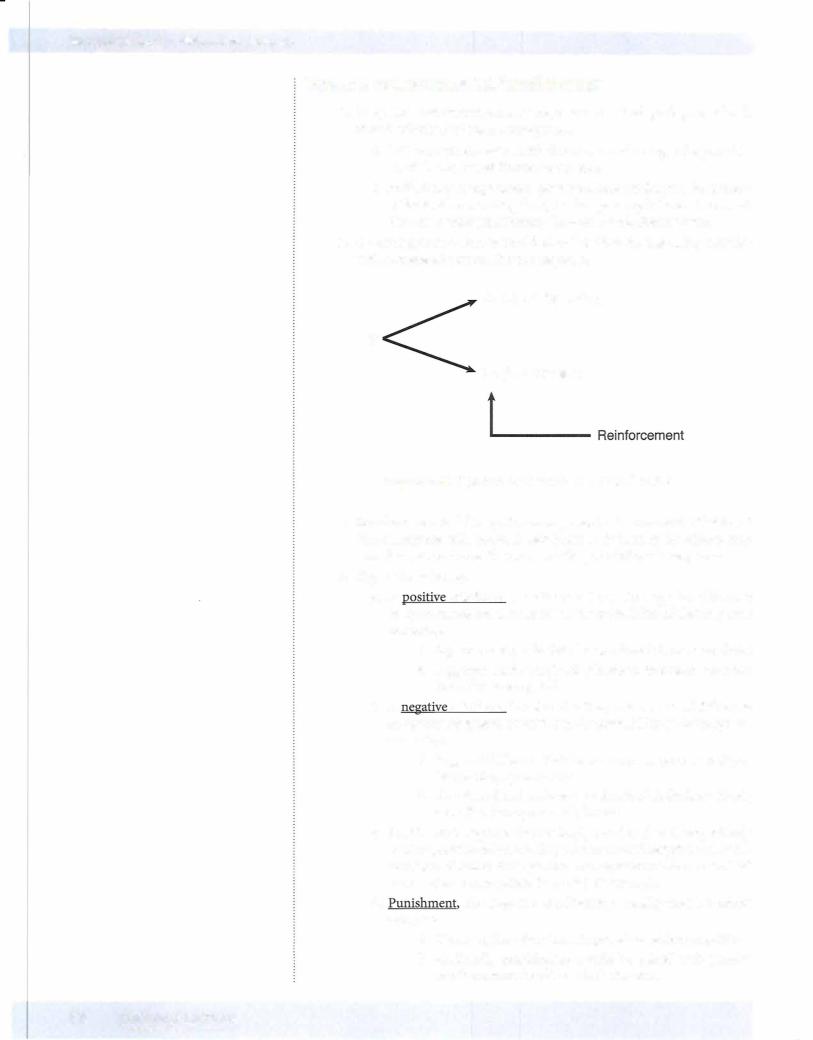

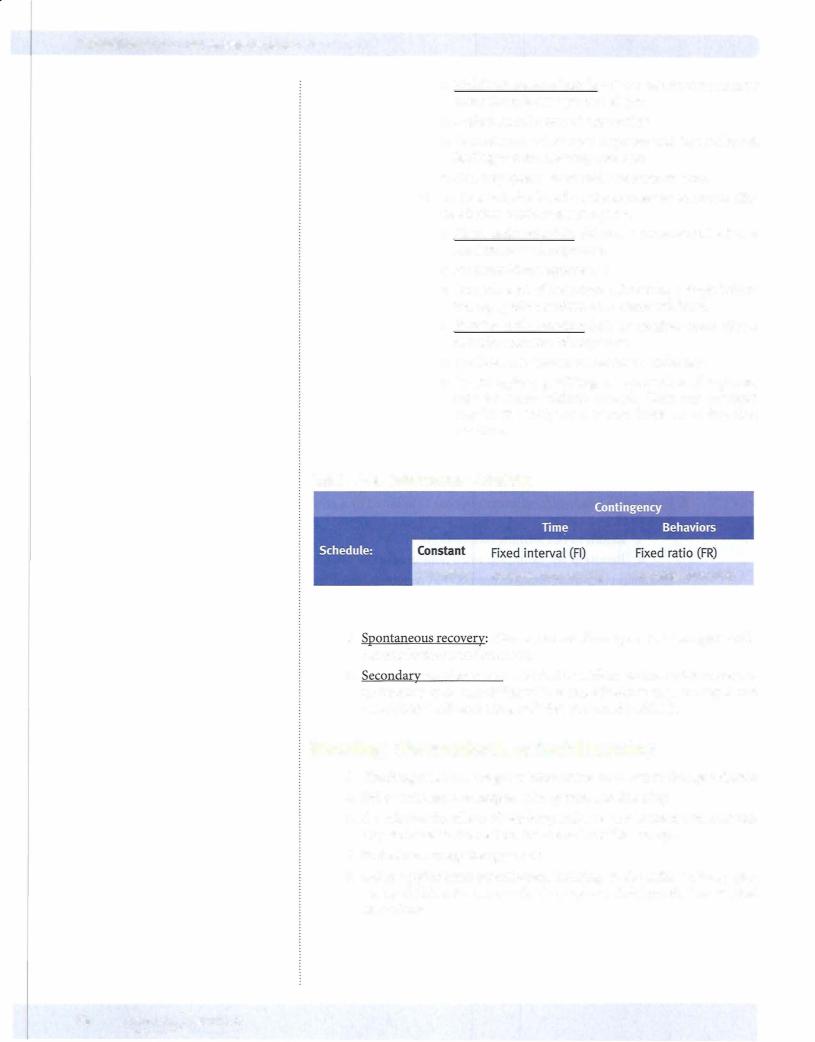
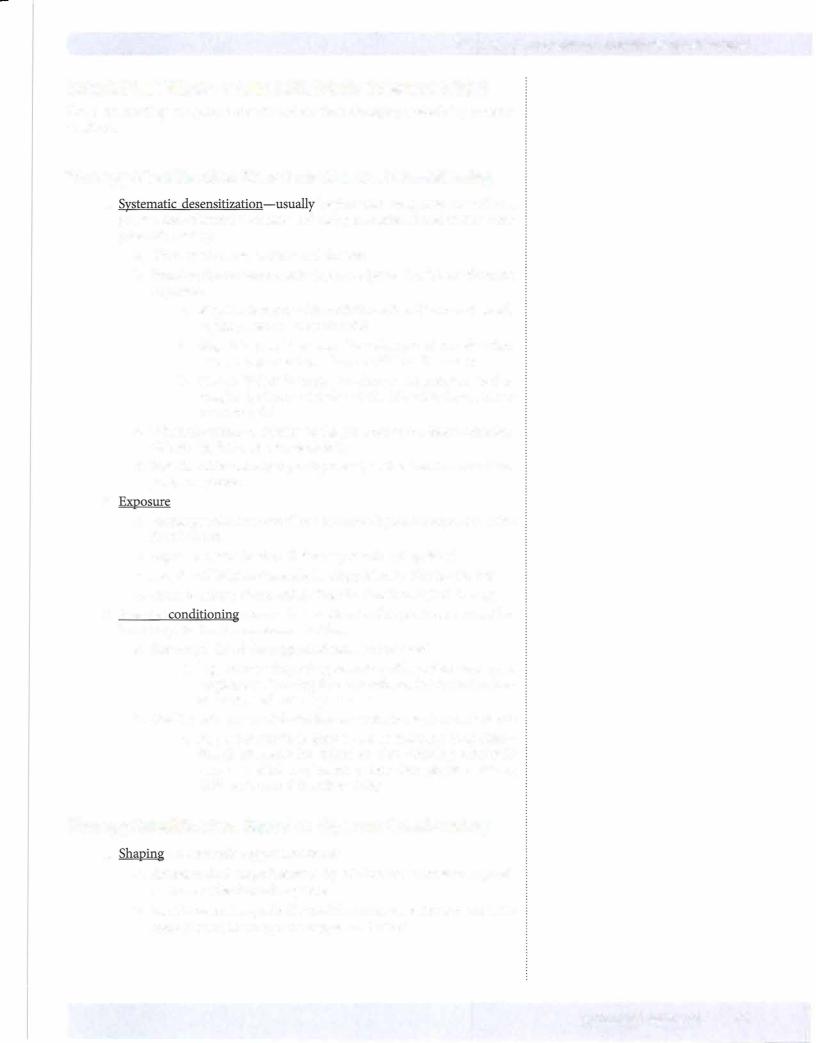
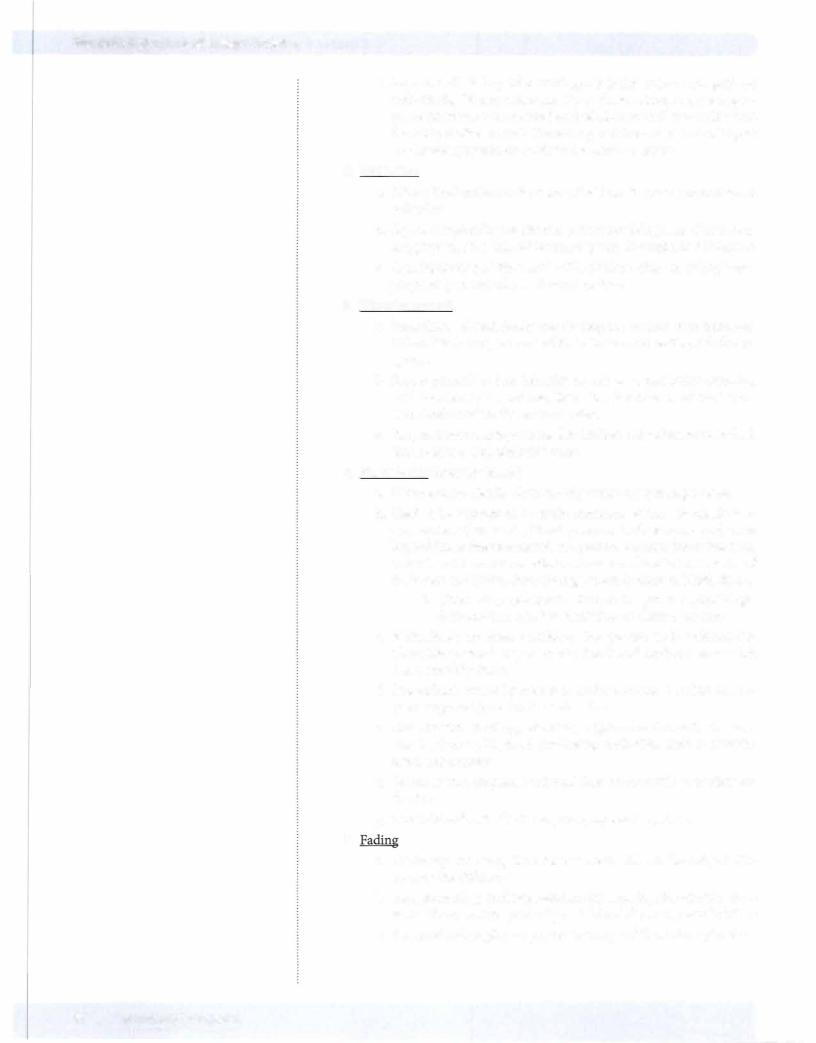
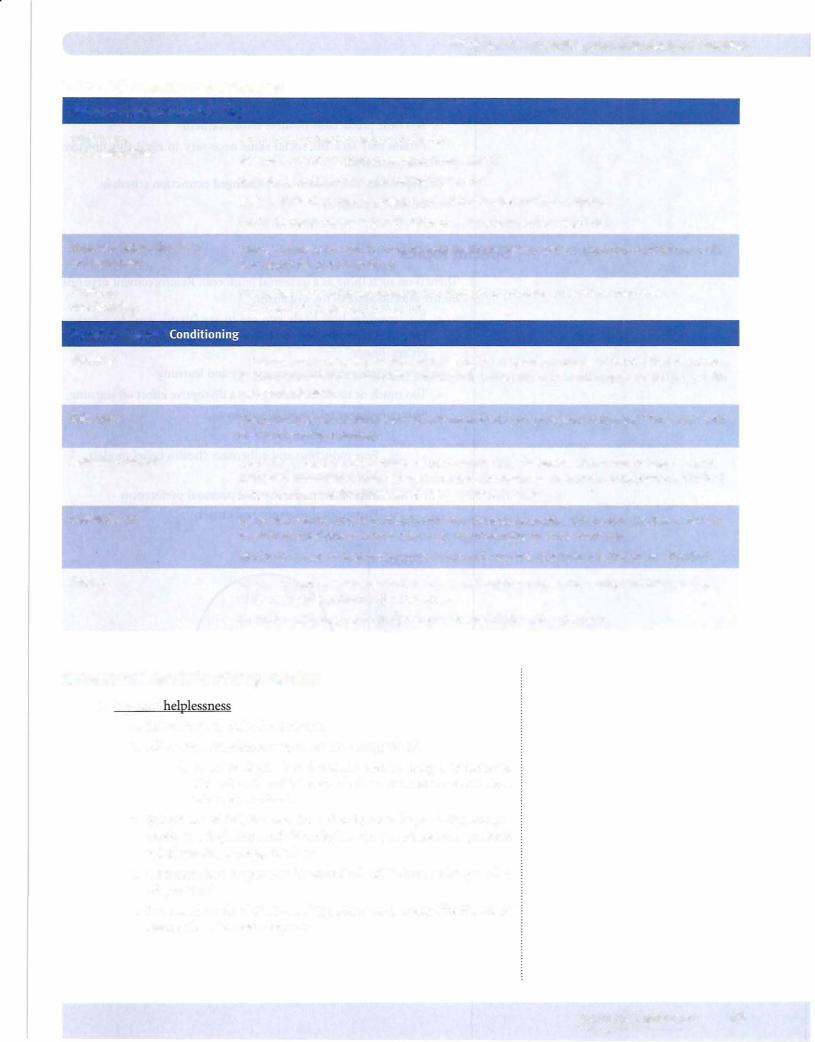

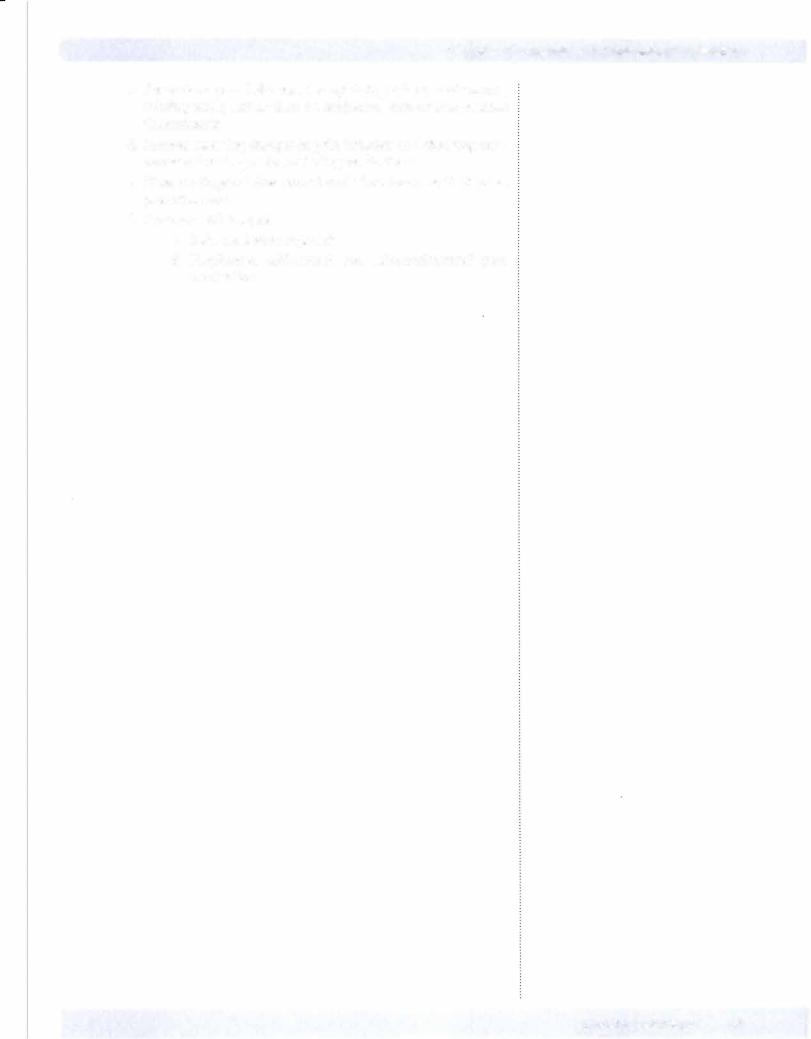
Chapter 6 • Learning and Behavior Modification
c.Focus is on pain behaviors (complaining, taking medications, missing work) rather than on subjective state or unconscious determinants
d.Involves assessing changes in pain behavior and changing envi ronmental contingencies, including medications
e.Time contingent: takes control and administers medications at preset intervals
f. Contrasts with hospice
L Pain contingent approach
IL Emphasizes self-control and self-administered pam medication
MEDICAL 81
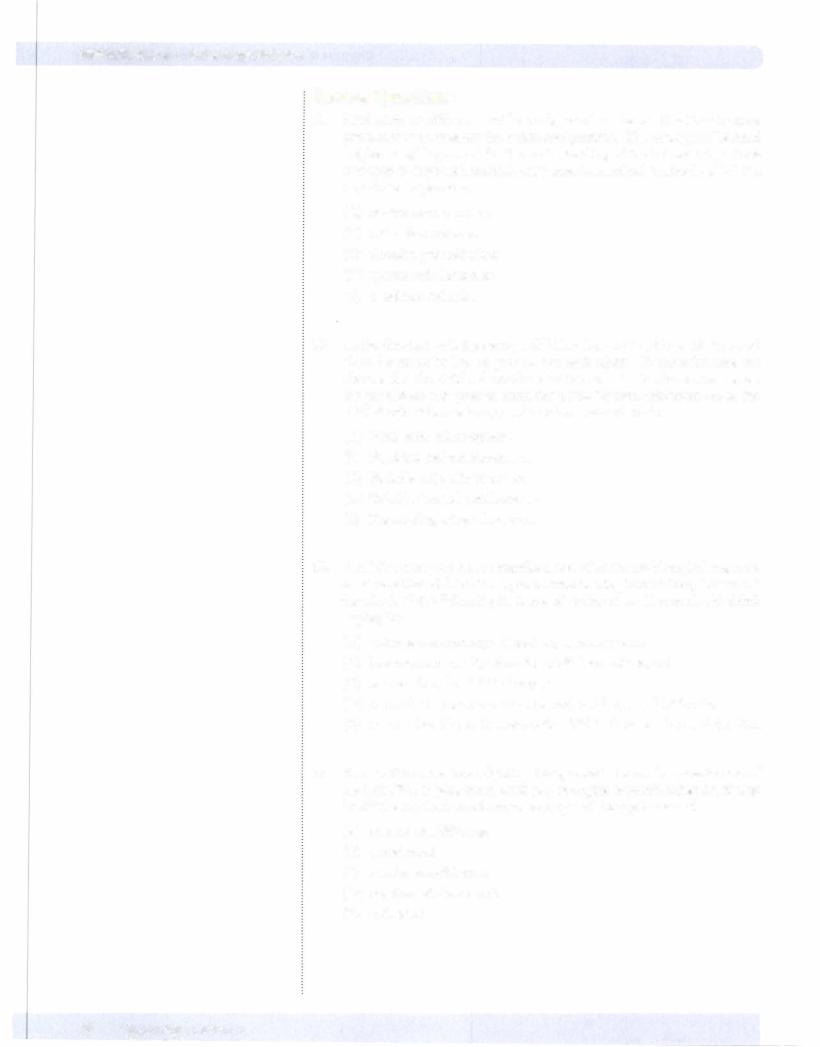
USMLE Step 1 • Behavioral Science
Review Questions
51. Psychiatric conditions must be understood as the result of biochemical imbalances and maladaptive behavioral patterns. The concept of "learned helplessness;' important for the understanding of the behavioral patterns common in depressed patients, originates from animal studies in which the experimenter prevents
(A)spontaneous recovery
(B)extinction behavior
(C)stimulus generalization
(D)operant reinforcement
(E)avoidance behavior
52.At the direction of his parents, a child has learned to pick up his toys and clean his room before he goes to bed each night. To most increase the chances that the child will continue this behavior in the future, even when the parents are not present, from this point forward reinforcement of the child should follow what type of reinforcement schedule?
(A)Fixed ratio reinforcement
(B)Fixed interval reinforcement
(C) Variable ratio reinforcement
(D)Variable interval reinforcement
(E)Noncontingent reinforcement
53.A child's crying can be the manifestation of an innate biological response or of conditioned behavior. Operant conditioning is most likely to account for which of the following instances of crying in an 18-month-old child? Crying that
(A)occurs spontaneously without any apparent cause
(B)increases in intensity when the adult does not respond
(C) occurs when the child is hungry
(D)occurs in response to an unexpected, sudden, painful stimulus
(E)occurs when the mother leaves the child in the care of a new babysitter
54.Two brothers have been fighting. Exasperated, the mother says to one of her sons, "Go to your room until you apologize to your brother for hitting him!" The mother's words are an example of the application of
(A)operant conditioning
(B)punishment
(C)aversive conditioning
(D)negative reinforcement
(E)extinction
82 PL MEDICAL
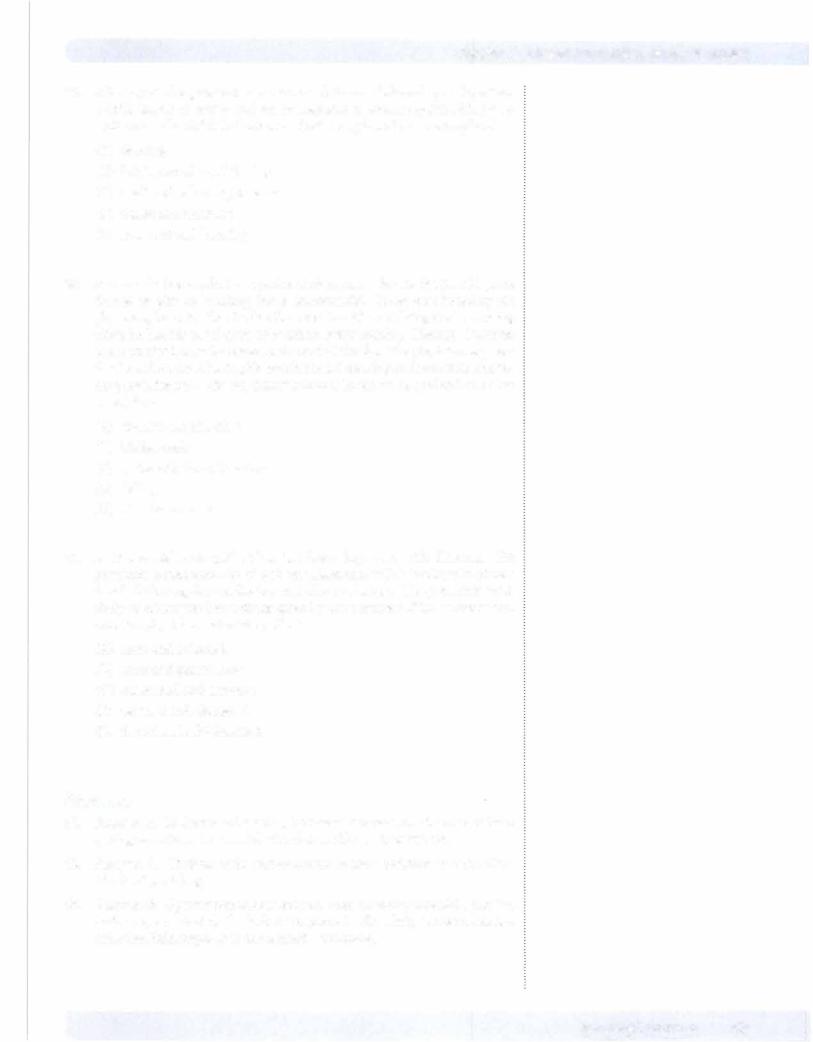
Chapter 6 • Learning and Behavior Modification
55.Afterrepeated exposure to a nurse in a white coat followed by an injection, a child learns to cower and cry in response to anyone approaching in a white coat. The child's behavior can best be explained as an example of
(A)shaping
(B)instrumental conditioning
(C)mediated reflex response arc
(D)classic conditioning
(E)observational learning
56.A man who has smoked two packs of cigarettes a day for the past 20 years decides to give up smoking, but is unsuccessful. When questioned by his physician, he notes that he has the most trouble refraining from smoking when he has his usual glass of bourbon every evening. Having "bourbon and a smoke" is how he relaxes at the end of the day. The physician suggests that he refrain from having his bourbon each evening and substitute an eve ning stroll instead. The physician's advice is based on an application of the principle of
(A)aversive conditioning
(B)biofeedback
(C) systematic desensitization
(D)fading
(E)stimulus control
57.A 56-year-old male patient has just been diagnosed with diabetes. His physician is concerned about fostering adherencewith a treatment regimen that includes regular medication and dietary changes. The patient is most likely to follow the instructions given by the physician if the conversation with the physician makes the patient
(A)calm and collected
(B)calm and questioning
(C)concerned and attentive
(D)worried and distracted
(E)fearful and self-absorbed
Answers
51. Answer: E. In the animal studies, the researcher prevents the animal from getting away from the painful stimulus: avoidance is prevented.
52.Answer: C. Variable ratio reinforcement is most resistant to extinction. Think of gambling.
53.Answer: B. Operant behavior is evident when an environmental stimulus, such as eye contact or the lack of response by the adult, evokes a learned behavior. Pain response is not learned, but innate.
MEDICAL 83
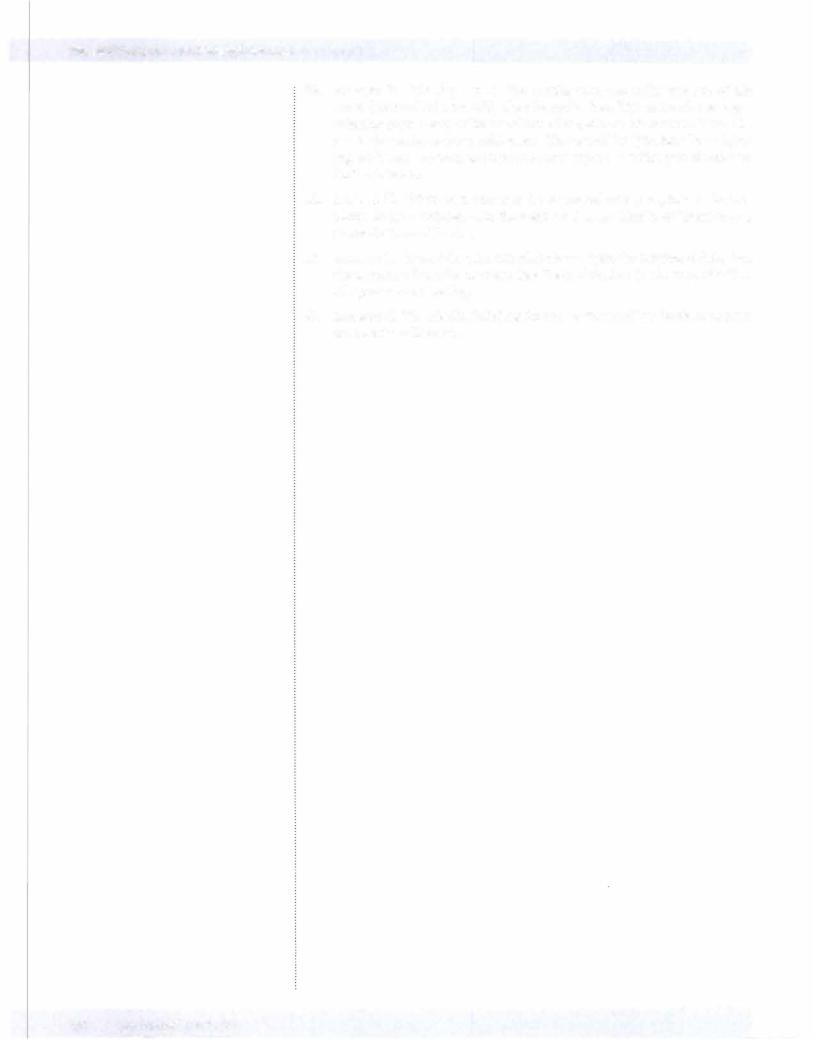
USMLE Step 1 • Behavioral Science
54.Answer: D. The key here is the contingency; the child gets out of his room (removal of a stimuli) when he apologizes. This removal, making a behavior more likely, is the definition of negative reinforcement. Note, the mother's words are not punishment. That would be "you have been fight ing with your brother, go to your room;' trying to inflict punishment to limit a behavior.
55.Answer: D. White coat comes to be associated with pain, just as the bell comes to be associated with the meat for Pavlov. Classic, or its synonym, respondent conditioning.
56.Answer: E. By avoiding the stimulus that triggers the unwanted behavior, the unwanted behavior becomes less likely. Note that this is an application of operant conditioning.
57.Answer: C. The Health Belief model tells us that medium levels of anxiety are best for adherence.
84 MEDICAL
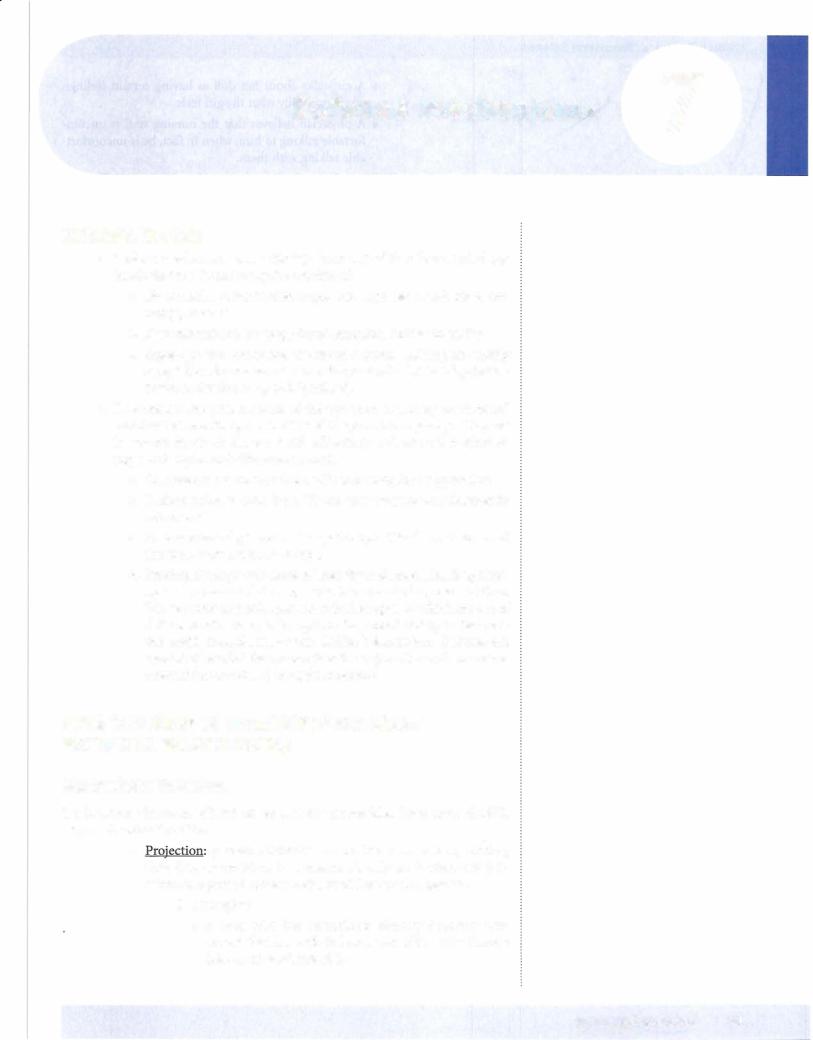

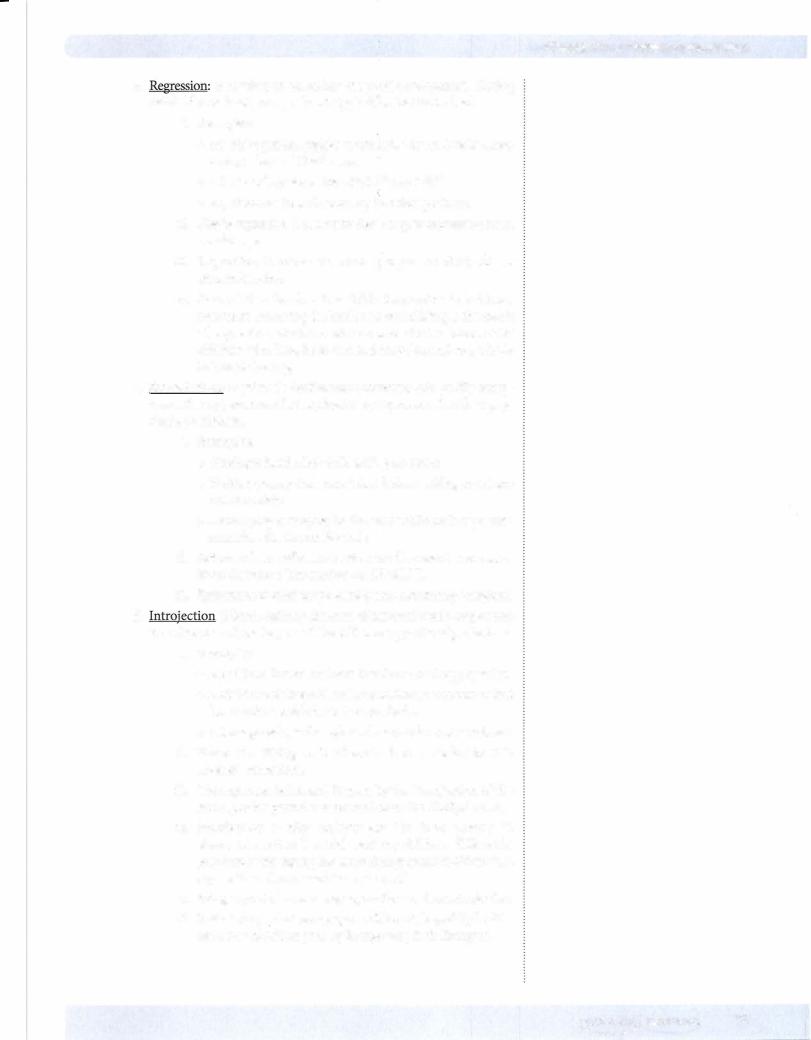
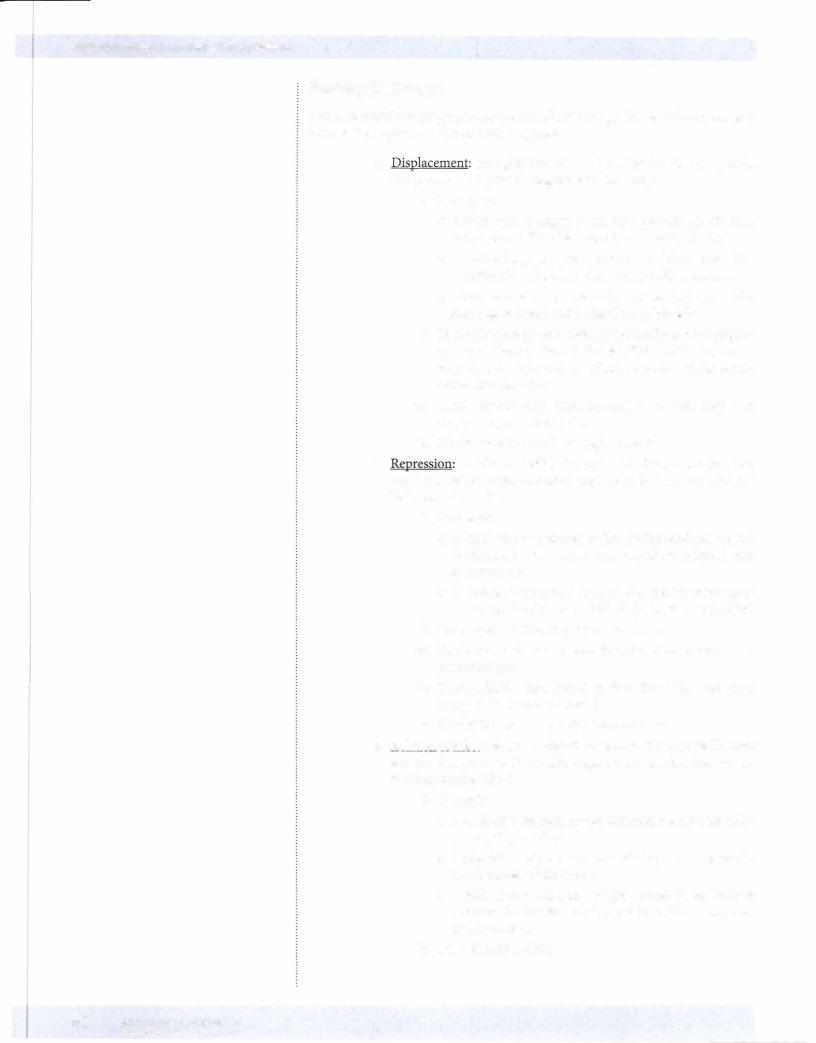
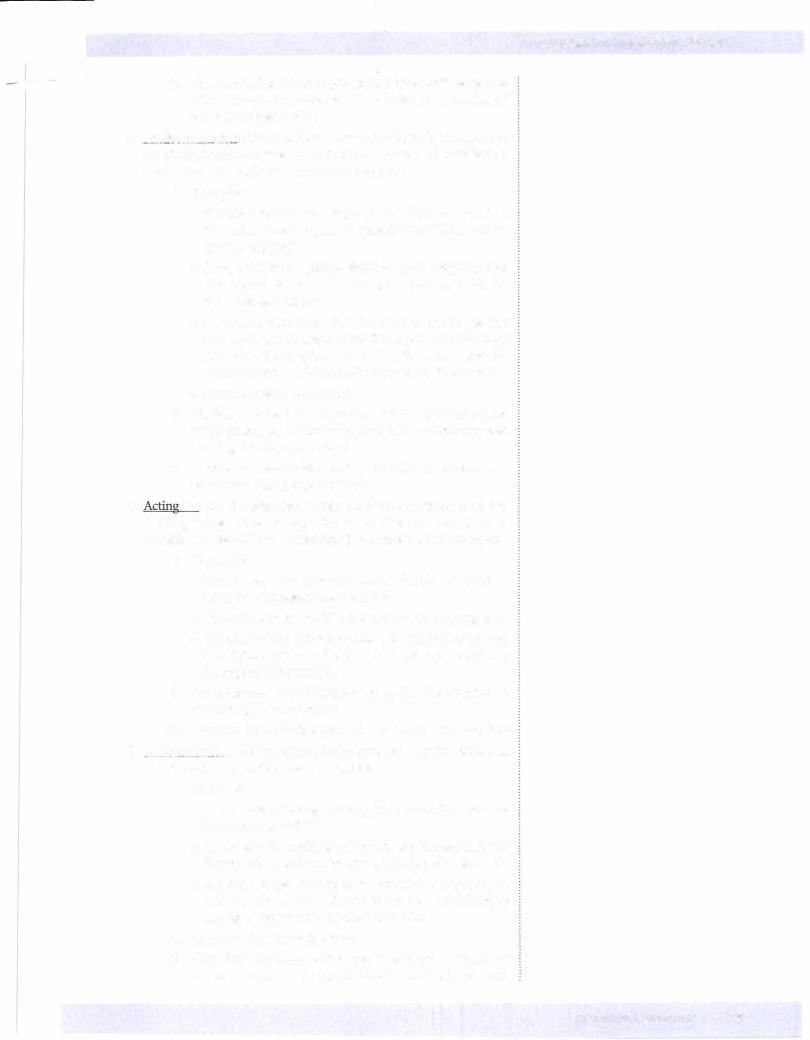
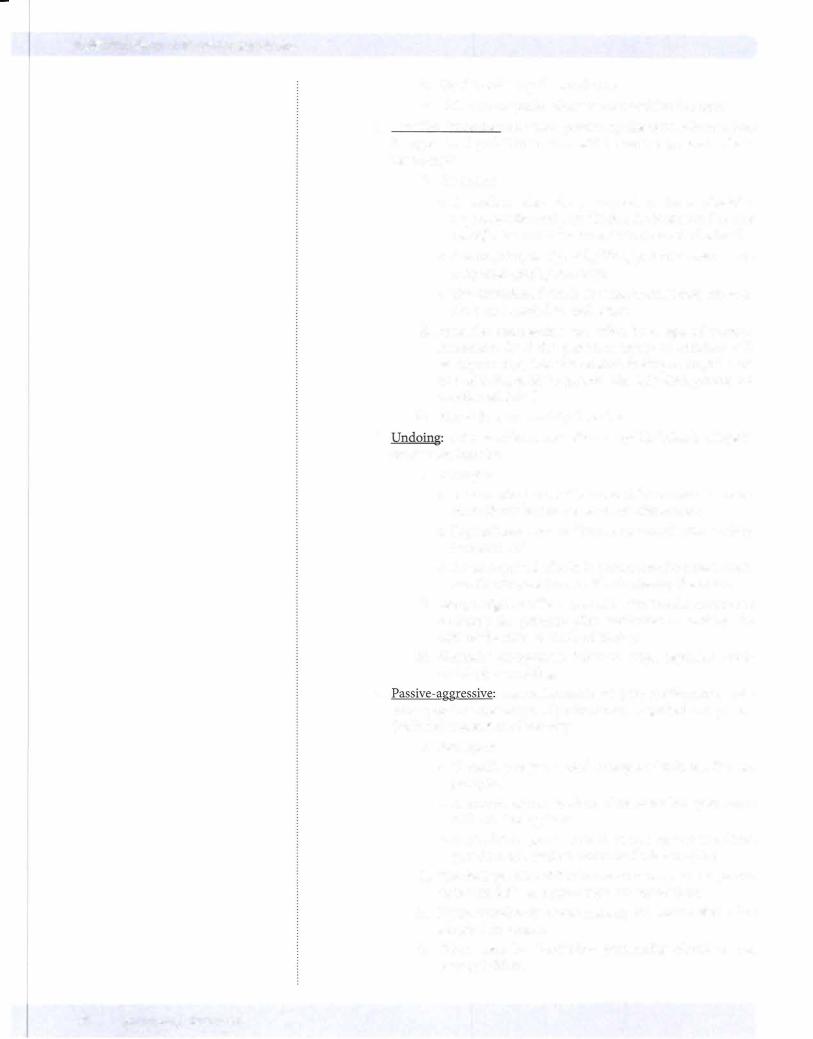
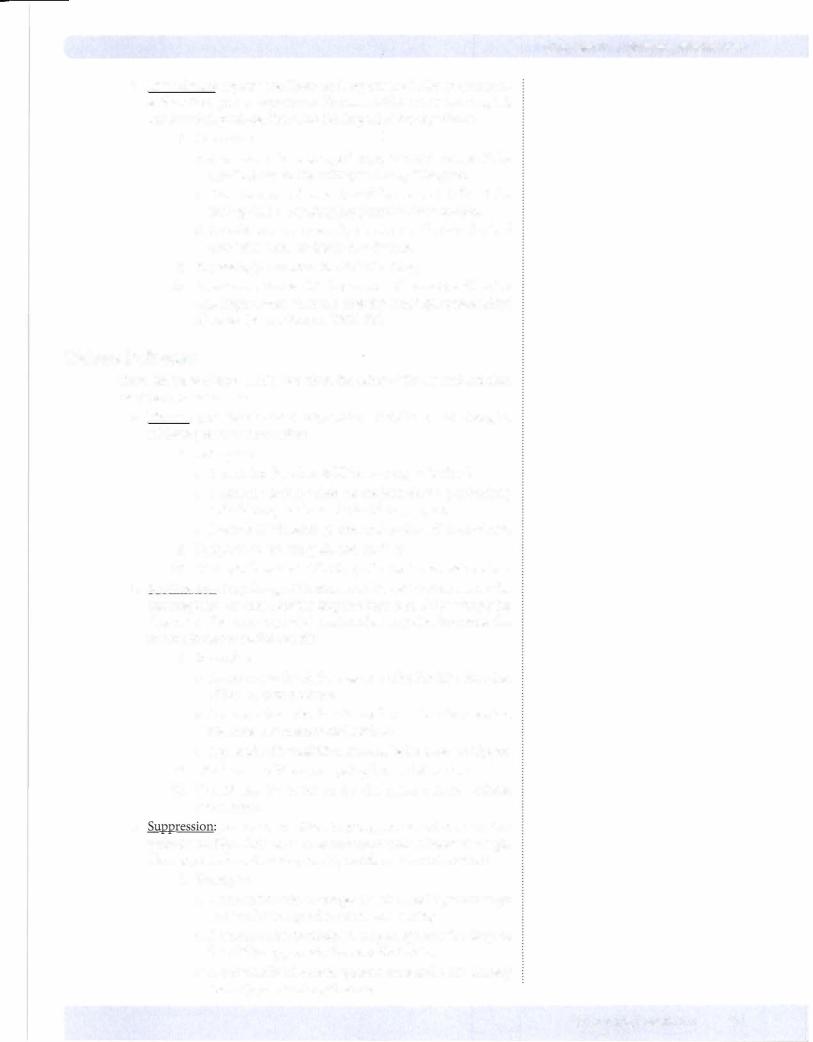


Chapter 7 • Defense Mechanism
Review Questions
58. "No, I don't remember, and I don't want to remember;'cries a man askedto recall a painful episode from his childhood. The defense mechanism most closelysuggested by this man's words and behavior is
(A)projection
(B)denial
(C) intellectualization
(D)dissociation
(E)repression
59.A woman finds herself in a town some distance from her home, without any recollection of how she got there. The defense mechanism that most likely accounts for this scenario is
(A)repression
(B)suppression
(C) dissociation
(D)reaction formation
(E)denial
60.When asked about his impending heart operation, the patient recounts the procedures in detail. He seems remarkablywell versed and, upon question ing, admits that he has been "reading everything I can get my hands on" about it. He discusses the details forhours,yetshows no emotional reaction to the impending events. The defense mechanism that most likely accounts for this scenario is
(A)rationalization
(B)repress10n
(C) regression
(D)isolation
(E)intellectualization
61. A woman with no previous history ofpromiscuity suddenlybegins to take on sexual partners ofboth sexes, one right after the other. The record shows that her new pattern of sexual behavior started soon after the death of a child to whom she was very dose. Yet, there is no indication of a period of mourning. The woman's behavior suggests the defense mechanism of
(A)isolation
(B)suppression
(C)denial
(D)acting out
(E)undoing
MEDICAL 93
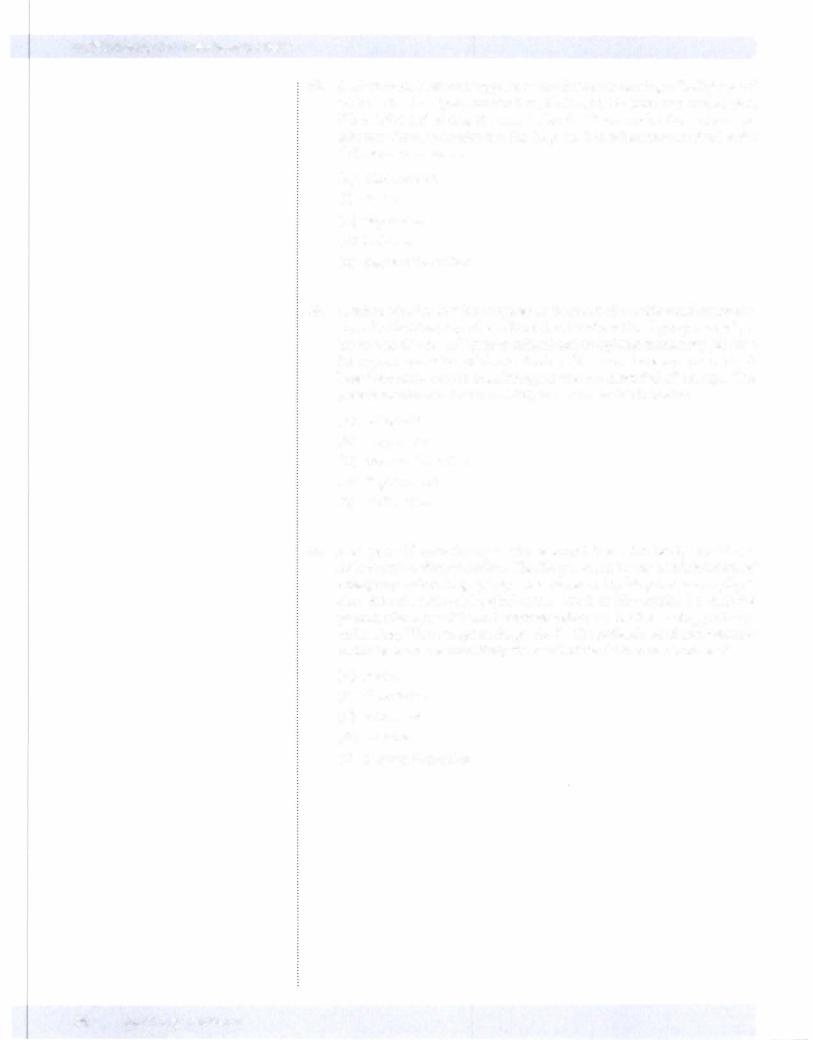
USMLE Step 1 • Behavioral Science
62.A 32-year-old Irish male appears at the clinic complaining of"a slight pain" on his left side. Upon examination, he is found to have two broken ribs. When informed of this, the man insists that it cannot be that serious and asks only for some medication for the pain. This is best characterized as the defense mechanism of
(A)displacement
(B)denial
(C) depression
(D)isolation
(E)reaction formation
63.A father, who has lost his daughter as the result of a traffic accident involv ing a drunk driver, organizes a local chapter of a national group campaign ing to stop the sale of liquor to minors and to legislate mandatory jail time for anyone convicted of drunk driving. "If I can't have my girl back, at least I can make sure it doesn't happen to some other father;' he says. The defense mechanism that most likely accounts for this behavior is
(A)acting out
(B)suppression
(C) reaction formation
(D)displacement
(E)sublimation
64.A 64-year-old male factory worker is hospitalized after barely surviving a serious myocardial infarction. His life was saved by the administration of emergency balloon angioplasty. The following day his primary care physi cian visits the patient's hospital room. Much to his surprise, he finds the patient, who never did much exercise before, on the floor doing push-ups and saying, "Time to get in shape, doc!" The patient's word and behavior in this instance are most likely the result of the defense mechanism of
(A)denial
(B)dissociation
(C) acting out
(D) undoing
(E) reaction formation
94 MEDICAL
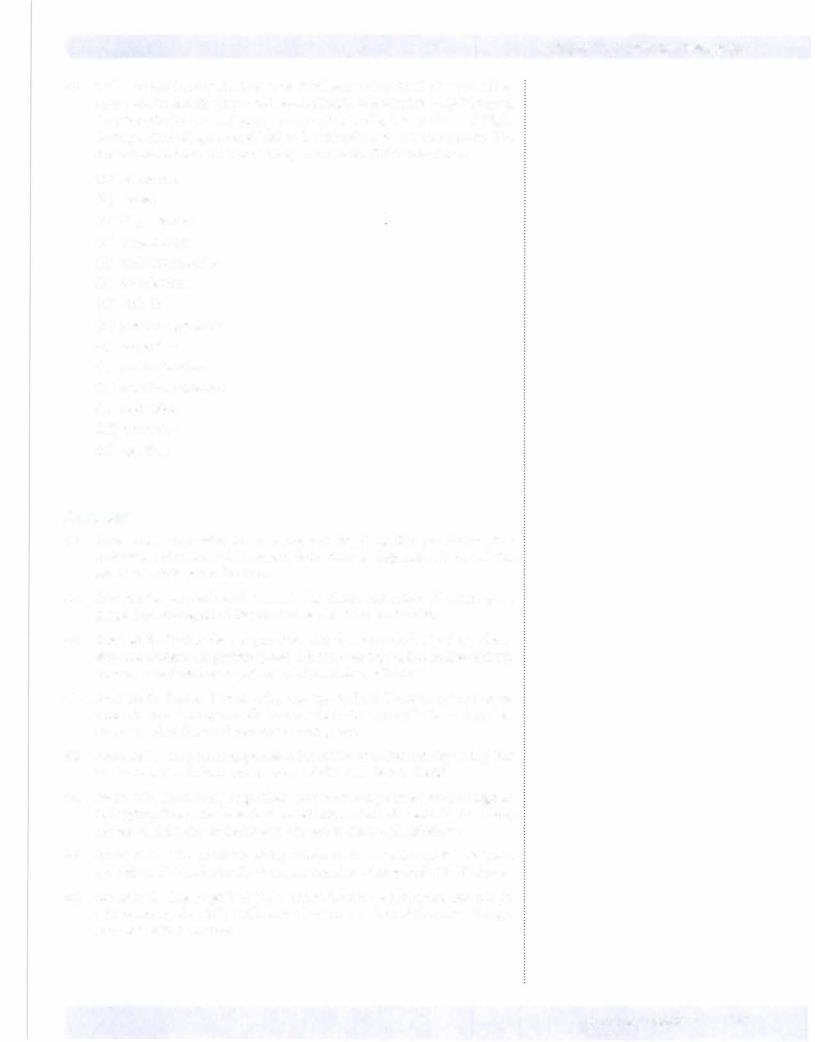
Chapter 7 • Defense Mechanism
65.Bob is an avid sports fan who runs 5 miles everyday for fitness and relax ation, and frequentlyplays touch football with others in this neighborhood. One day after he had had an argument with his wife, Bob got into a fistfight during a football game and had to be restrained by his teammates. The defense mechanism that most likely accounts for Bob's behavior is
(A)acting out
(B)denial
(C) displacement
(D)dissociation
(E)intellectualization
(F)introjection
(G) isolation
(H)passive-aggressive
(I)projection
(J)rationalization
(K)reaction formation
(L)regression
(M)repression
(N)splitting
Answers
58.Answer: E. Repression is forgetting, and forgetting that you forgot. It is enduring and motivated by unconscious desires. Repression is one of the most basic defense mechanisms.
59.Answer: C. Amnesia with travel is the classic definition of psychogenic fugue state, the result of dissociation as a defense mechanism.
60.Answer: E. Rather than responding with the expected level of apprehen sion and anxiety, the patient spends his time reading and cognitive activity. Anxiety is replaced by cognitive activity: intellectualization.
61. Answer: D. Rather than showing the expected grief reactions, the woman embarks on a new course of behavior. This behavior masks the underlying, unexpressed feeling and constitutes acting out.
62.Answer: B. The patient responds to the reality ofbroken ribs by saying that it is not so. This bald-faced negation of objective facts is denial.
63.Answer: E. The father gets gratification fromthe impulse to save his daughter by helping others. The behavior is not simply redirected as with displacement, but targeted directly to the issue of concern to the benefit of others.
64.Answer: D. The patient is doing action to fix or make up for his heart condition. This behaviorally focused reversal is what undoing is all about.
65.Answer: C. The anger Bob feels toward his wife is redirected into a fight with someone else. Bob is still angry, but the recipient of the anger changes from his wife to another.
MEDICAL 95

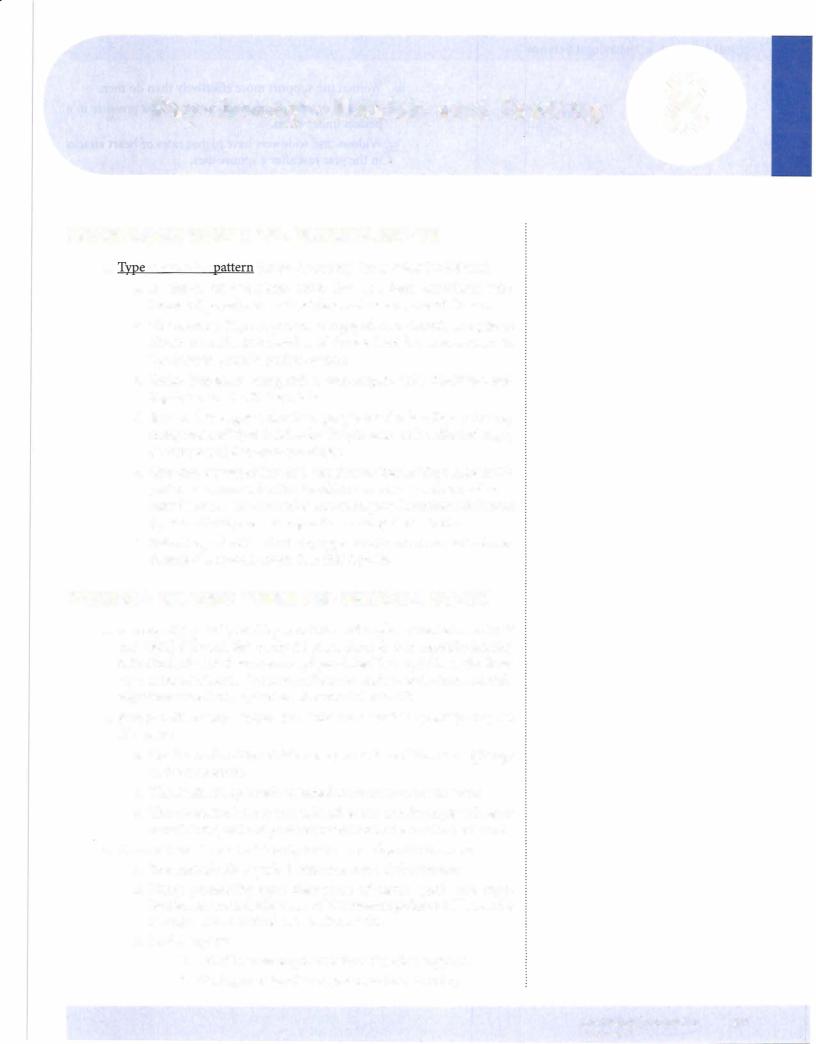
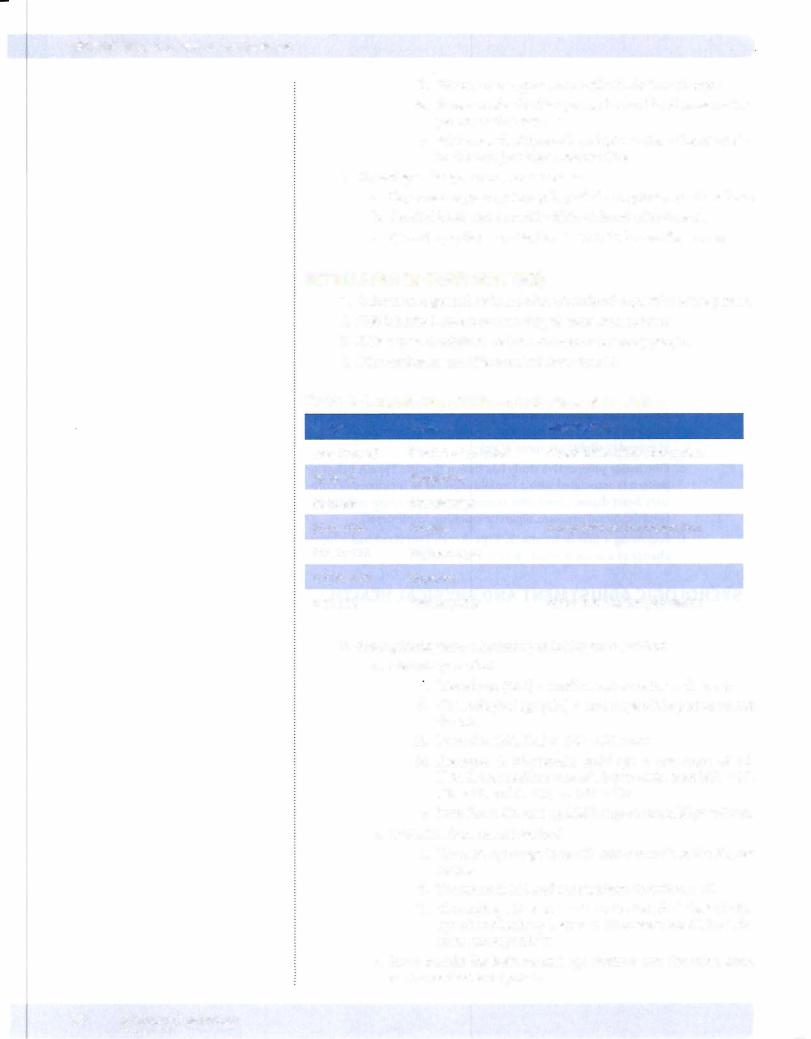
USMLE Step 1 • Behavioral Science
111.
IV.
Women use support more effectively than do men.
Presence of a familiar person lowers blood pressure in a person under stress.
v.Widows and widowers have higher rates of heart attacks in the year just after a spouse dies.
4.Physiologic changes in response to stress
a.Key stress response pathway: hypothalamic-pituitary-adrenal axis
b.Cortisol levels rise then fall within 24 hours after stressor.
c.Secondary spike in cortisol levels 48 to 72 hours after stressor
INTELLIGENCE QUOTIENT (IQ)
1.Definition: a general estimate of the functional capacities of the person
2.70% inherited, recent studies suggest most from mother
3.IQ is not an absolute score but a comparison among people.
4.Distribution mean: 100; standard deviation: 1 5
Table 8-1. Distribution ofIQScores in the General Population
Range |
Label |
Distribution |
Less than 69 |
Mental retardation |
About 2.5% ofthe population |
70 to 79 |
Borderline |
|
80 to 89 |
Low average |
|
90 to 109 |
Average |
About 50% ofthe population |
110 to 119 |
High average |
|
120 to 1 29 |
Superior |
|
over 130 |
Very superior |
About 2.5% ofthe population |
5. Scaling intelligence: calculating an intelligence quotient a. Mental age method
L Mental age (MA) = median test score for a given age
IL |
Chronological age (CA) = actual age of the person taking |
|
the test |
ni. |
Formula: (MA/CA) X 100 = IQ score |
IV. |
Example: A 10-year-old child got a test score of 25. |
|
If 25 is the median score of 13-year-olds, then MA = 13, |
|
CA = 10, and (13/10) X 100 = 130 |
v.Note that as CA goes up, ifMA stays constant, IQgoes down.
b.Deviation from norms method
i.For each age range (cohort), take a sample of the IQ test scores.
IL
ui.
The mean is 100 and the standard deviation is 15.
If a child age 10 scores a 25 on the test, find the table for age 10 and look up a score of 25 to see what IQ level the score corresponds to
c.Error margin for both mental age method and deviation from norms method is ±5 points.
98 MEDICAL
